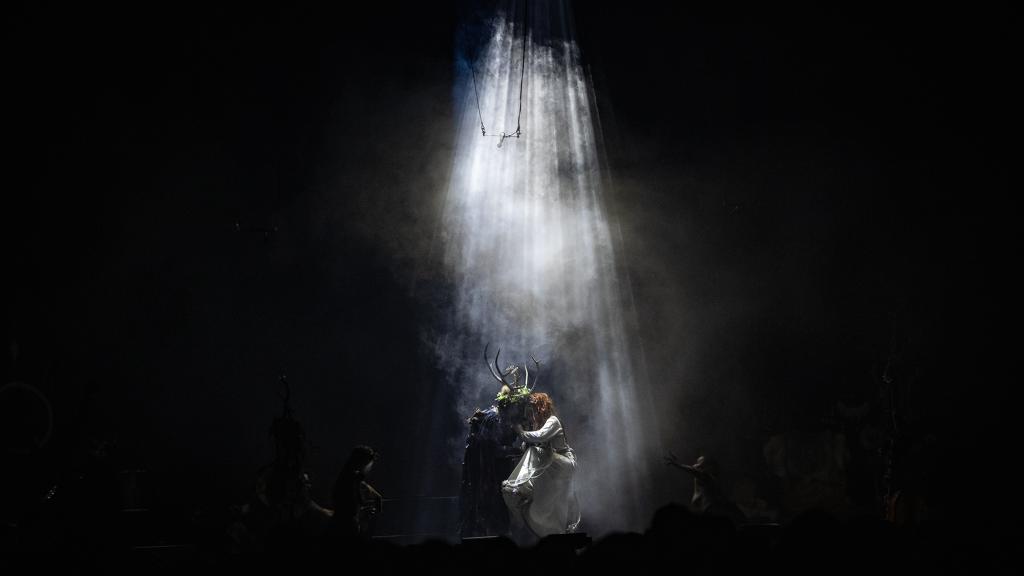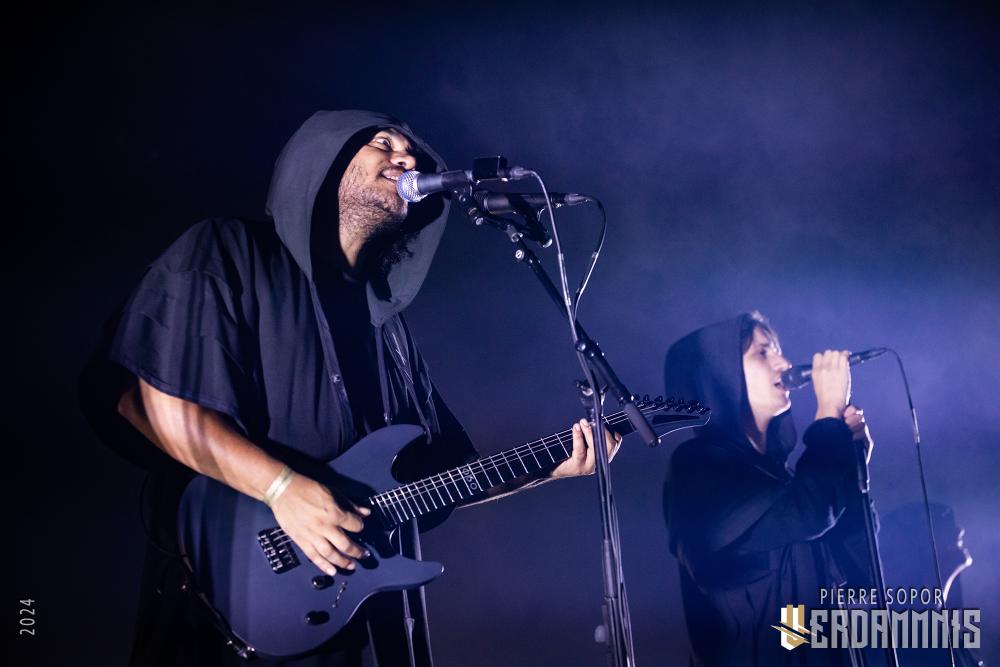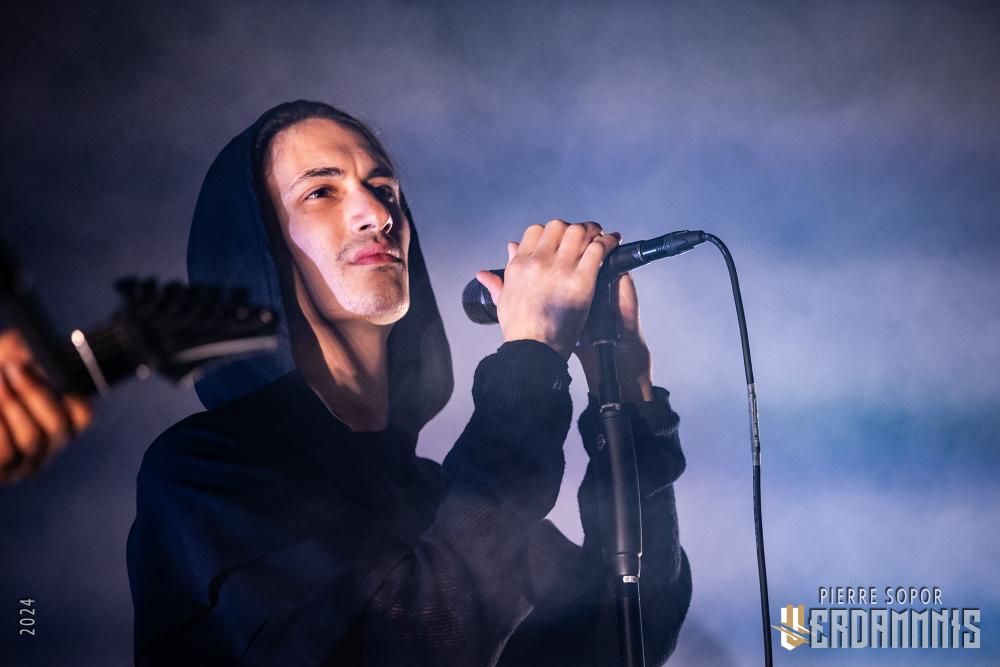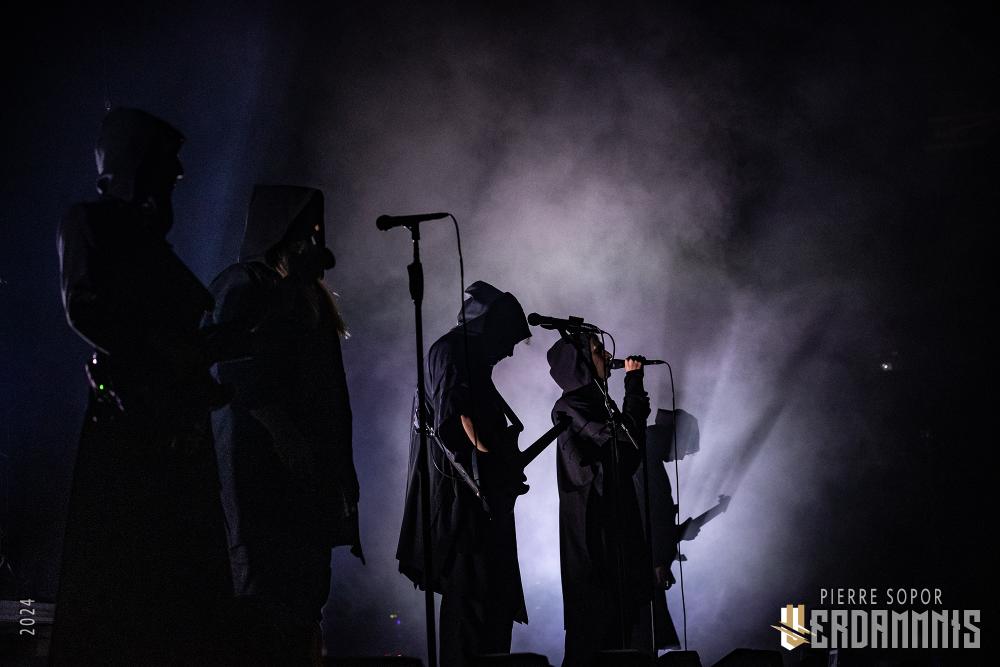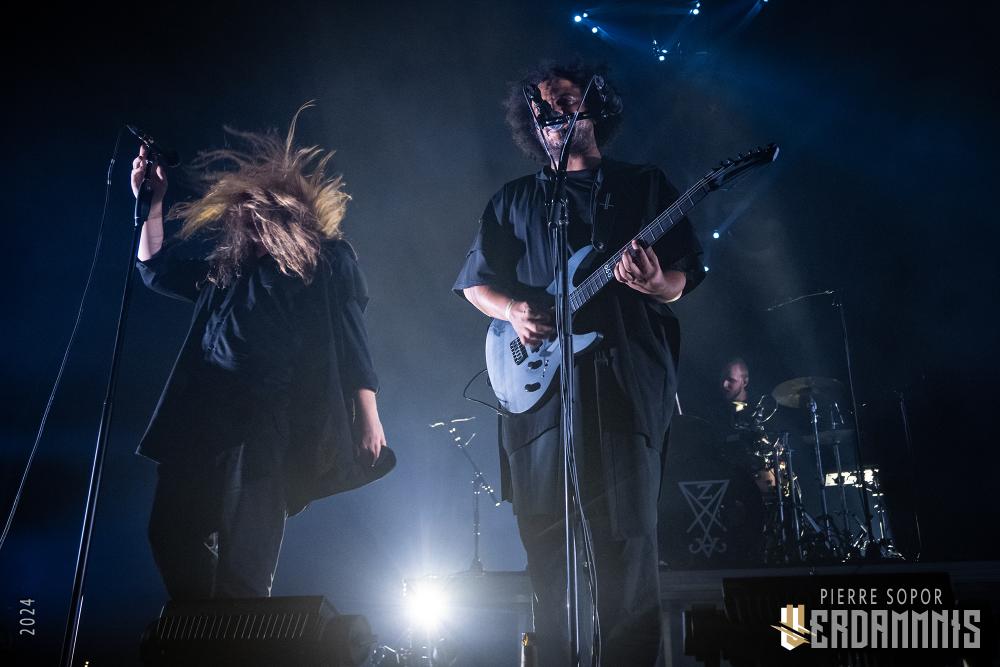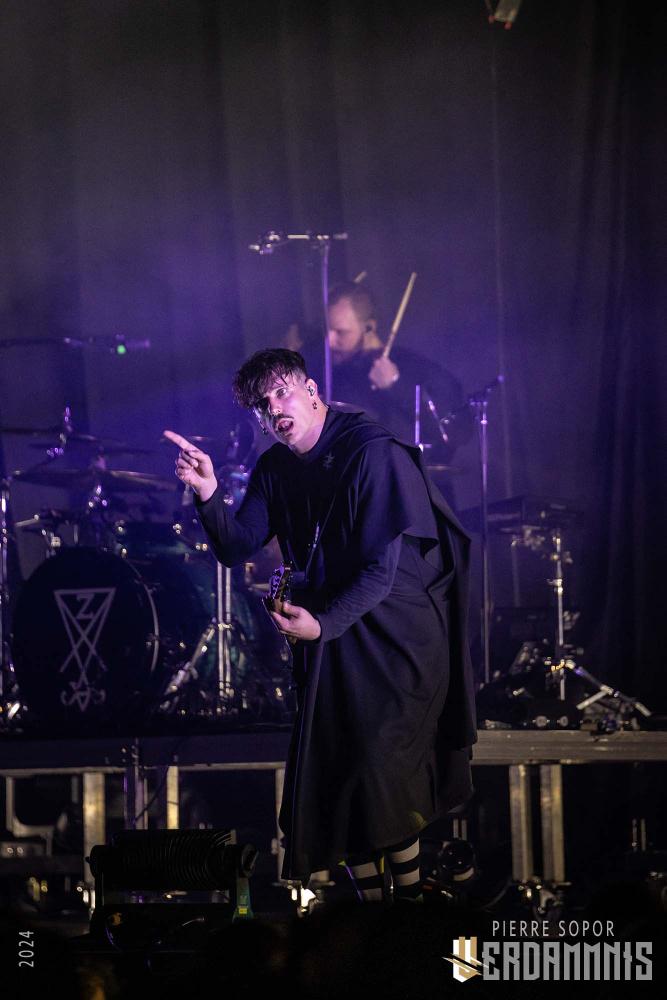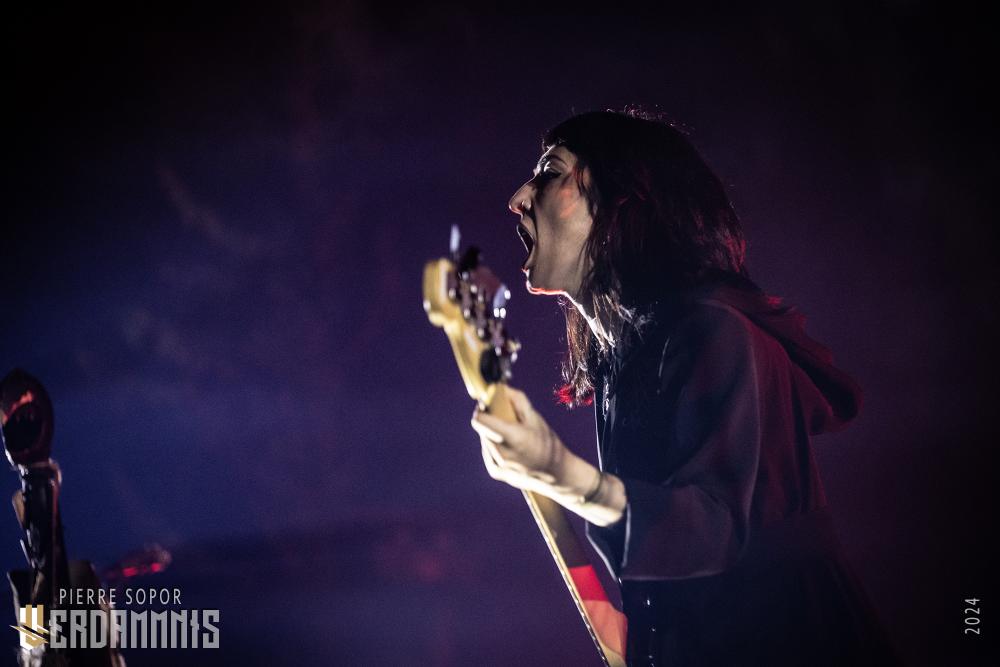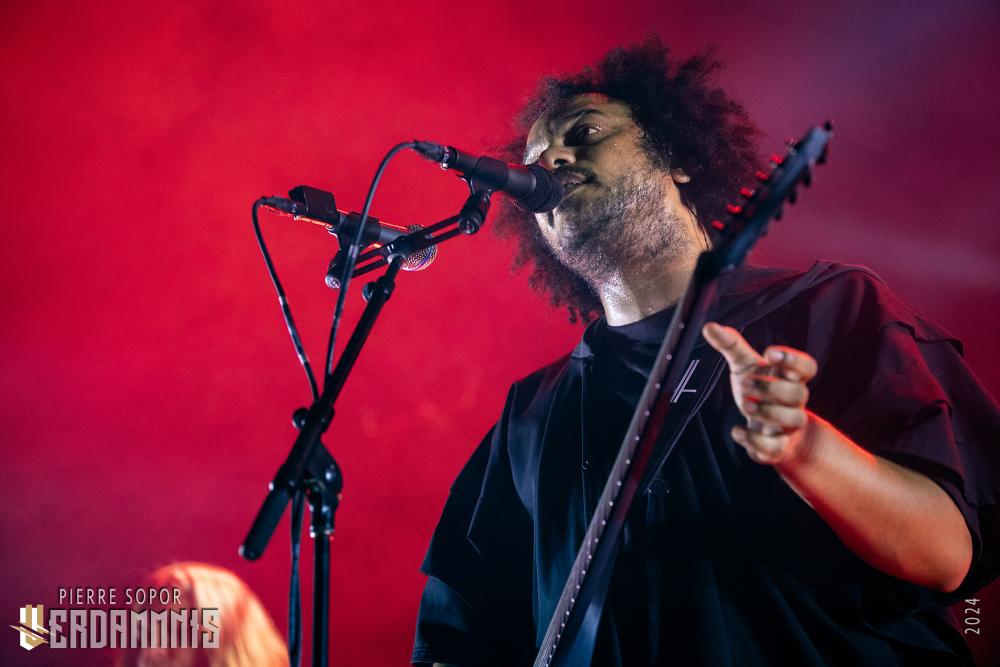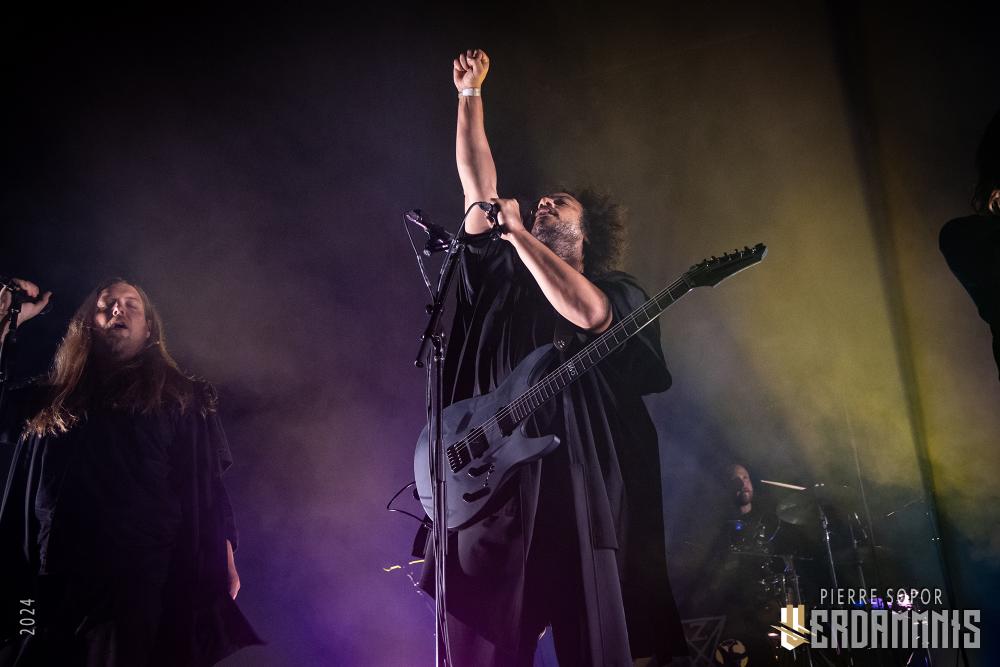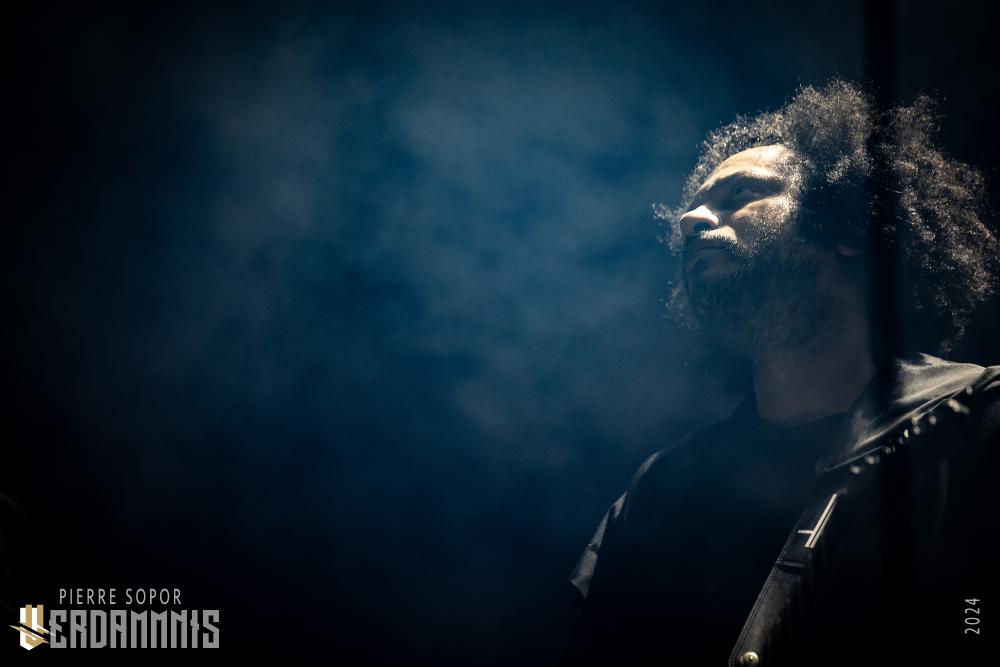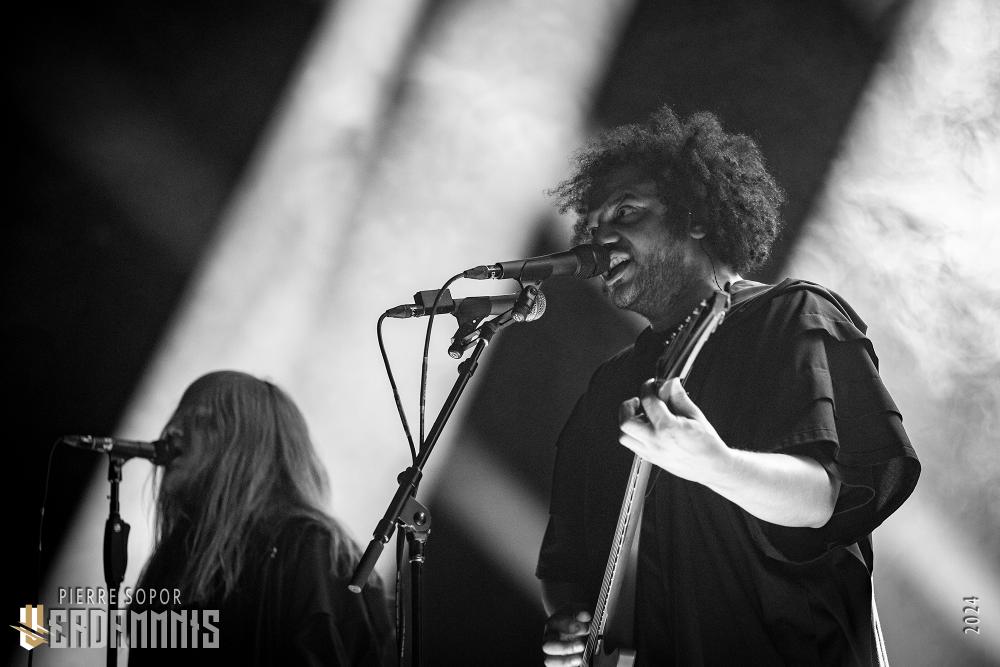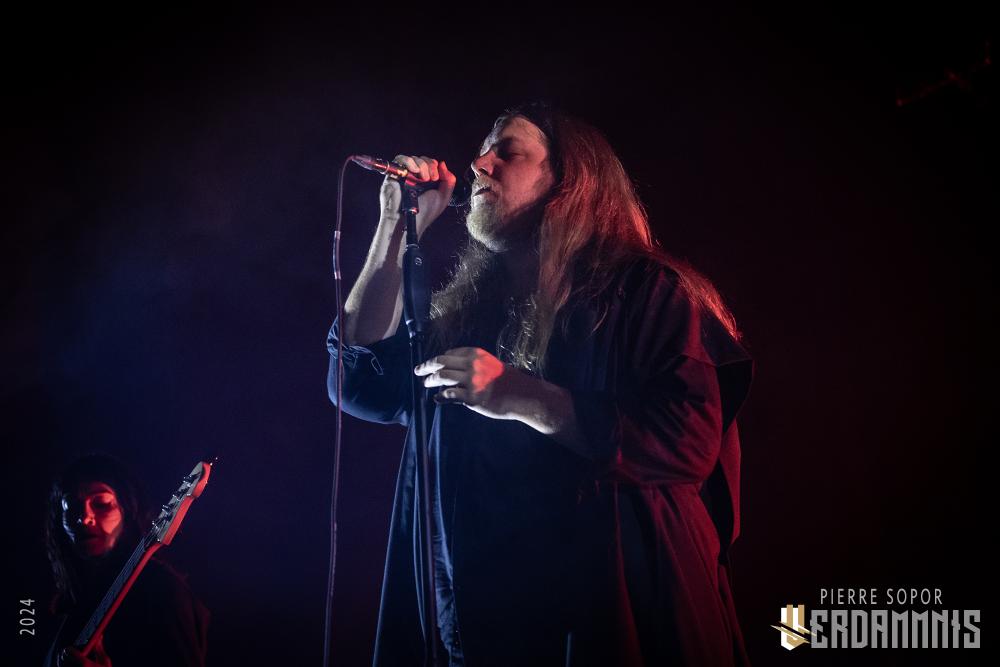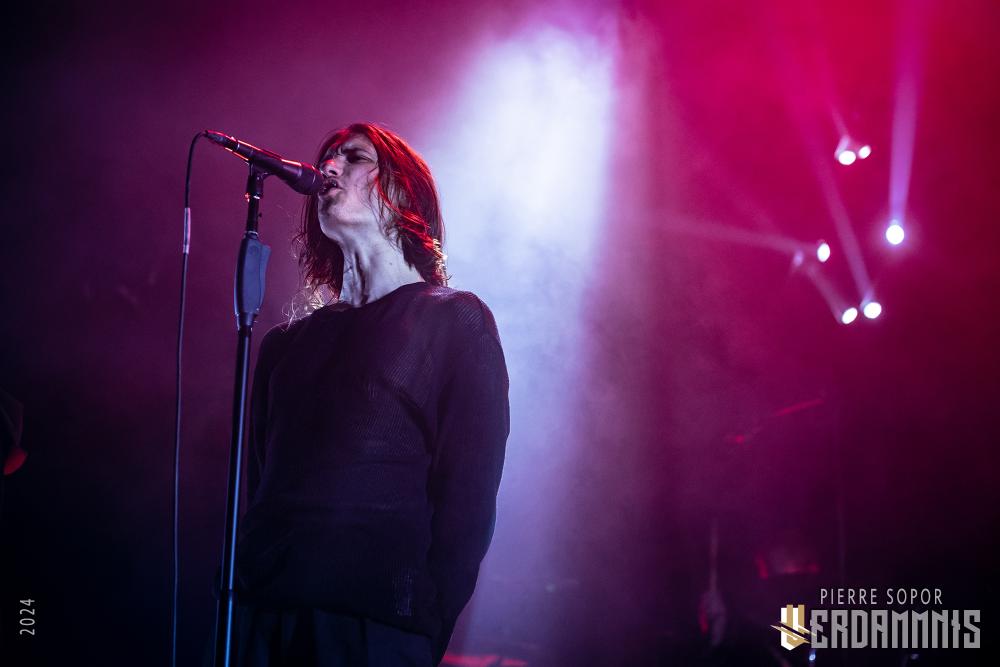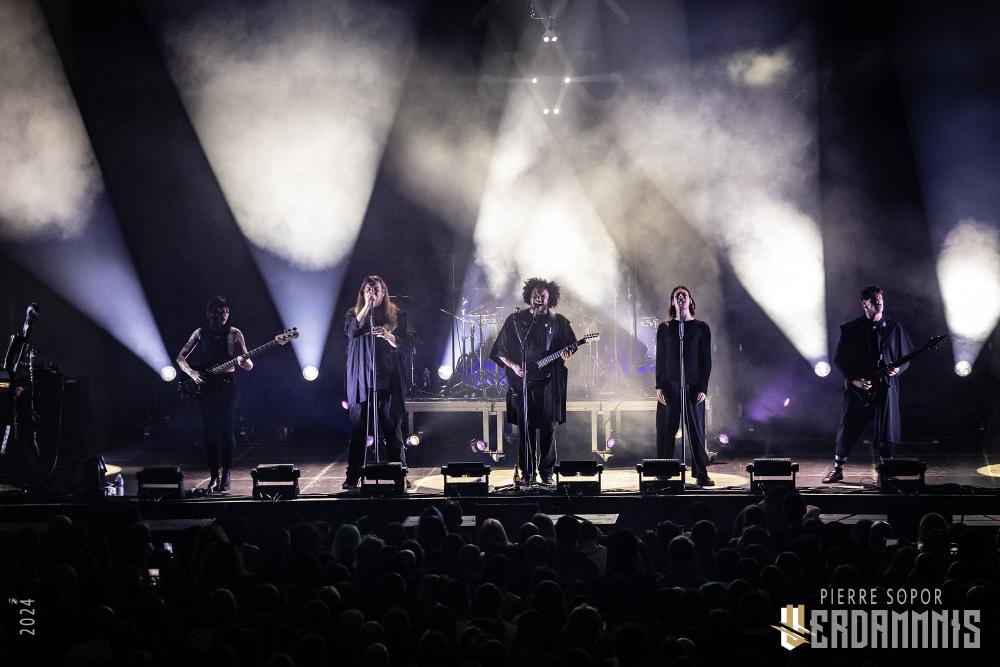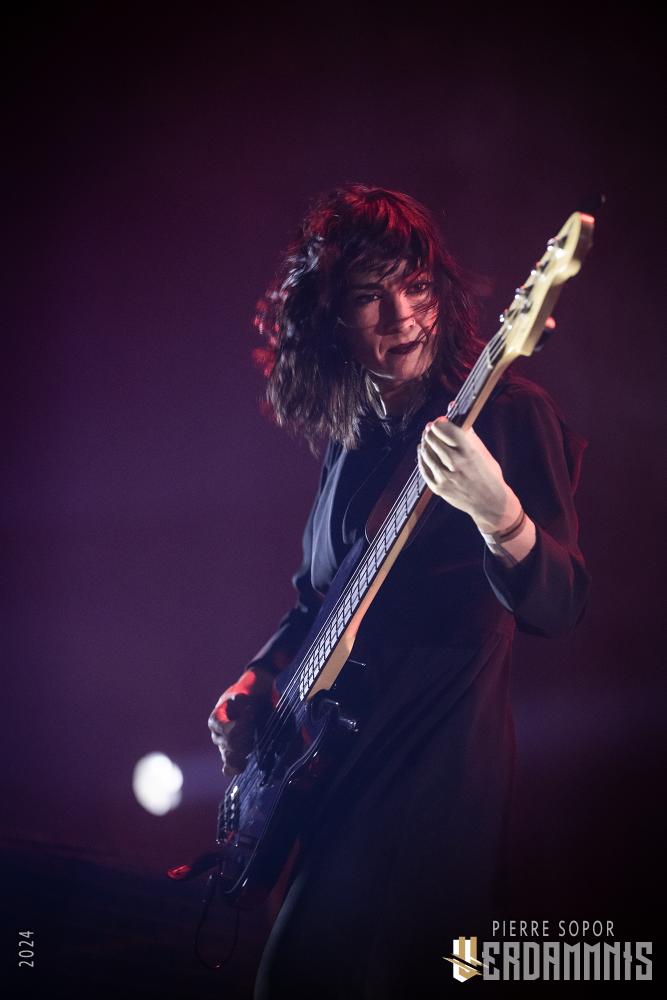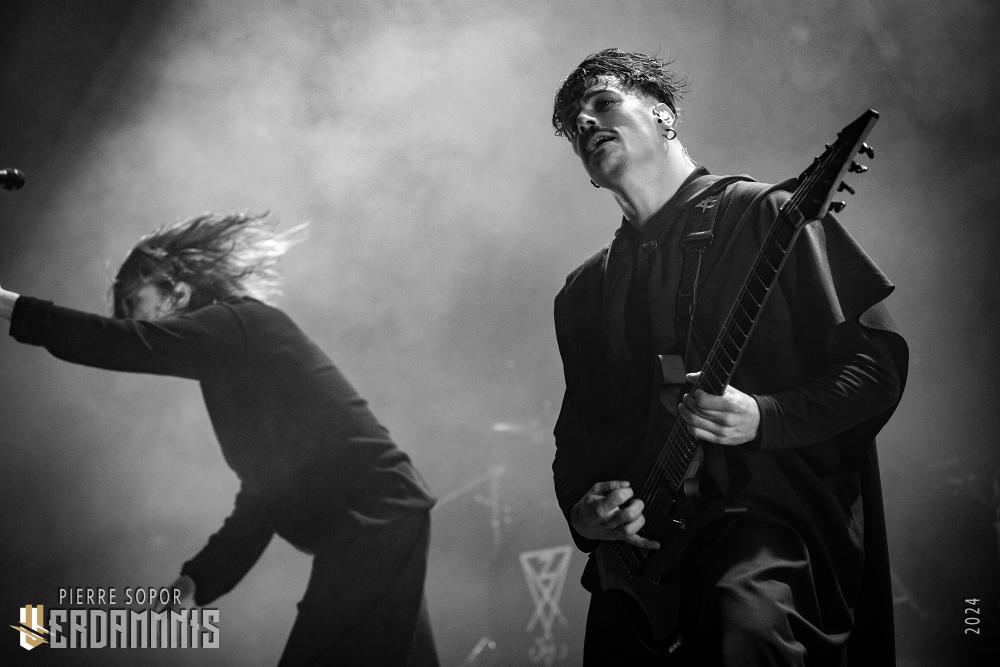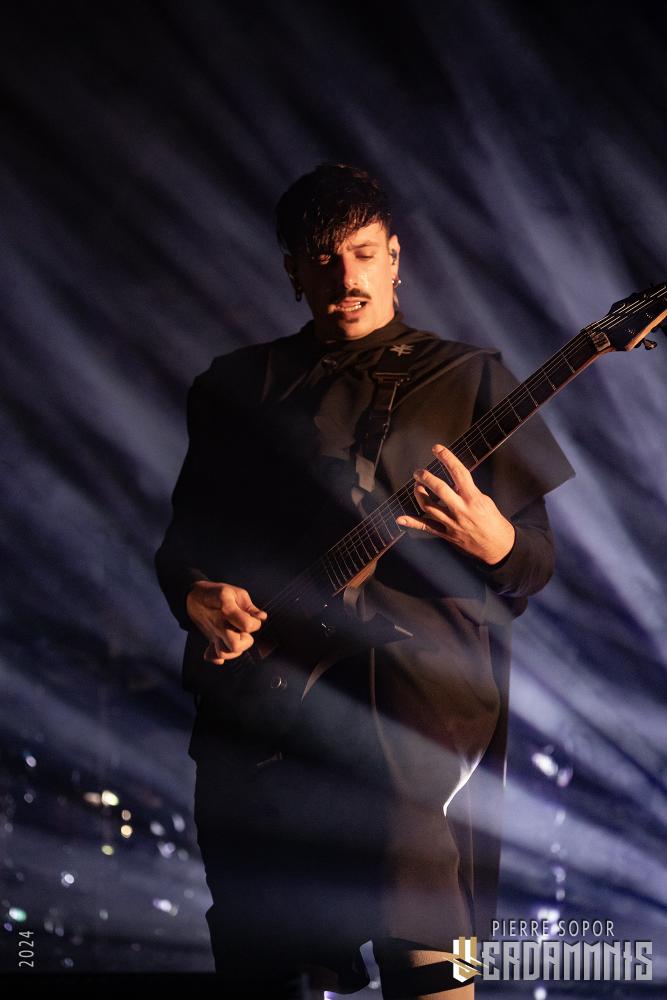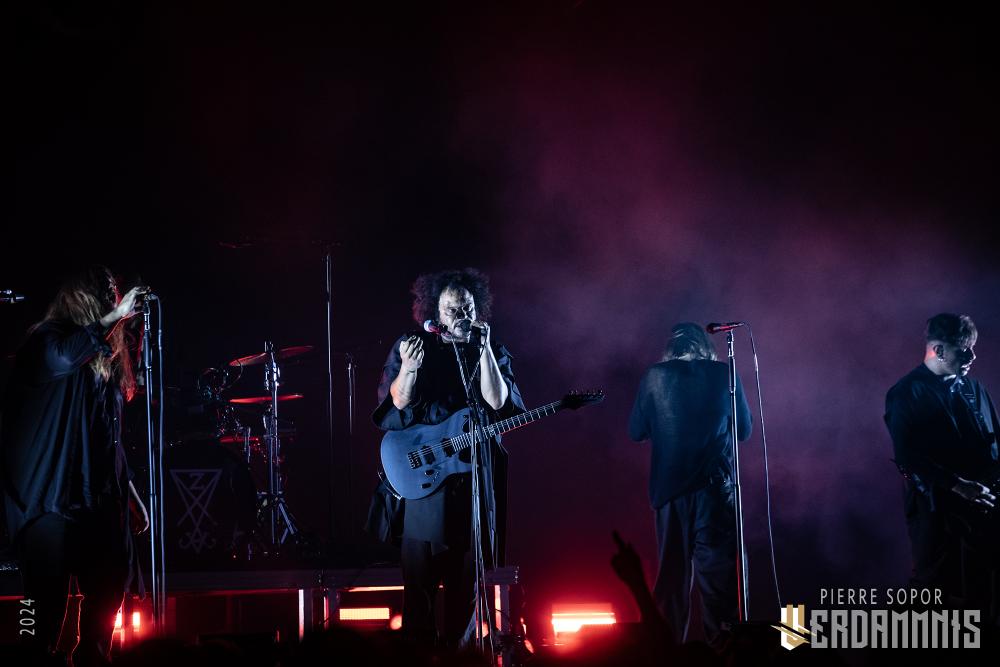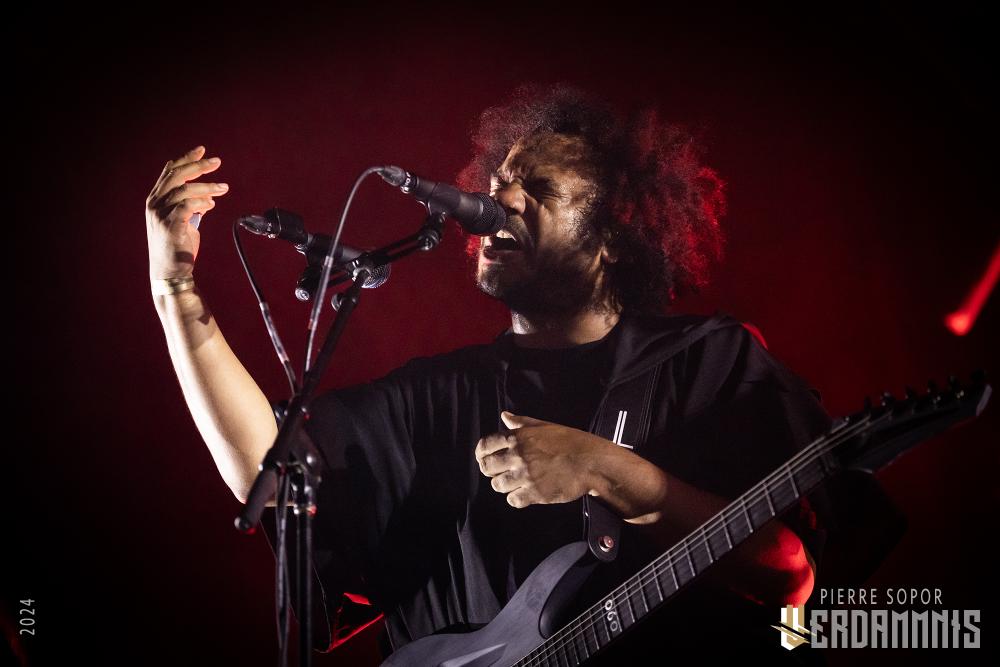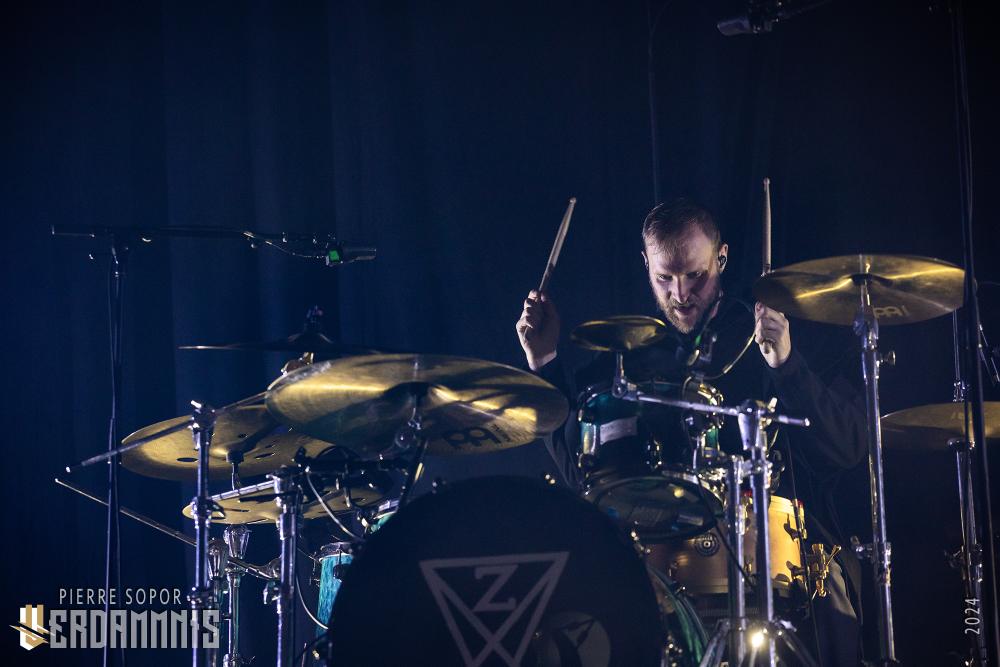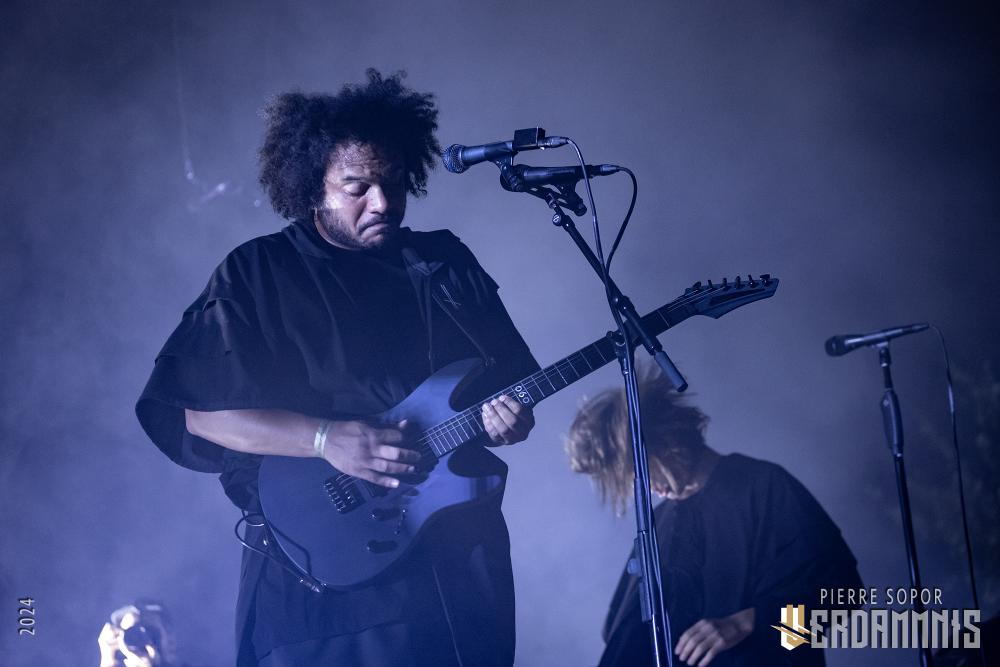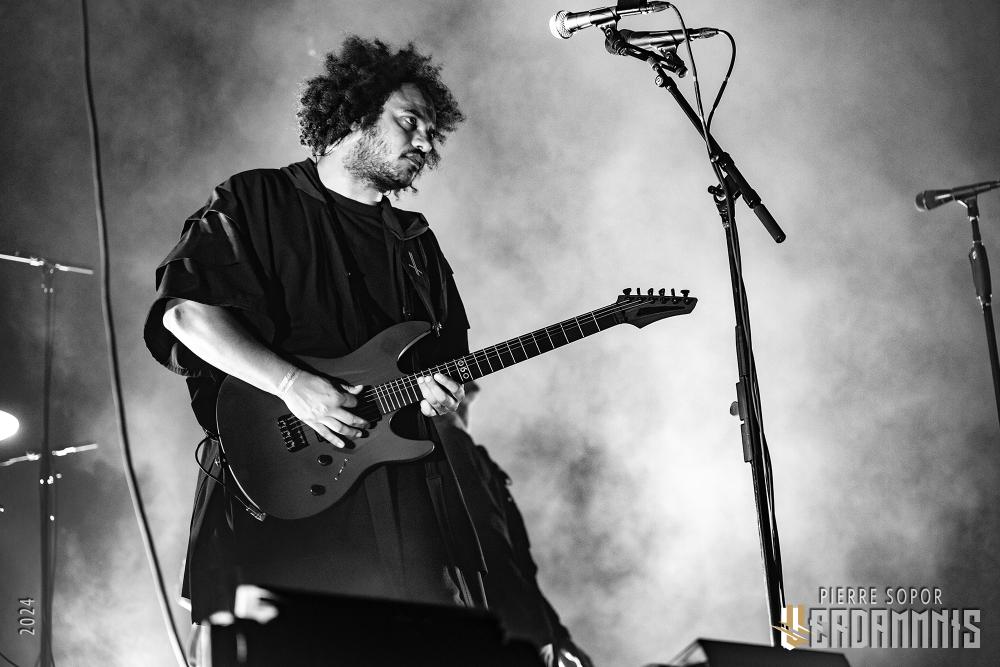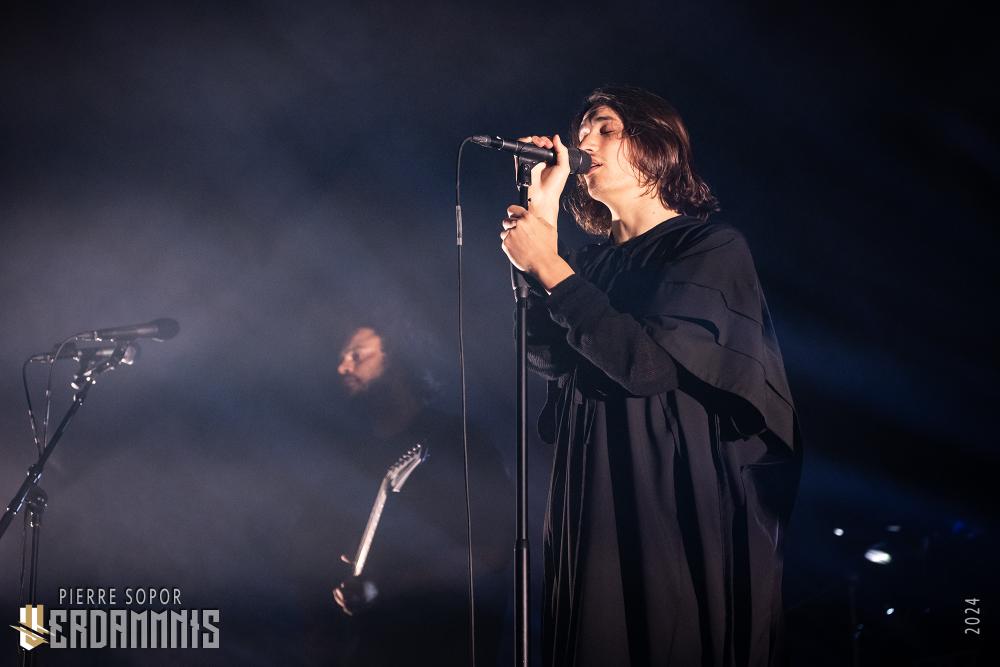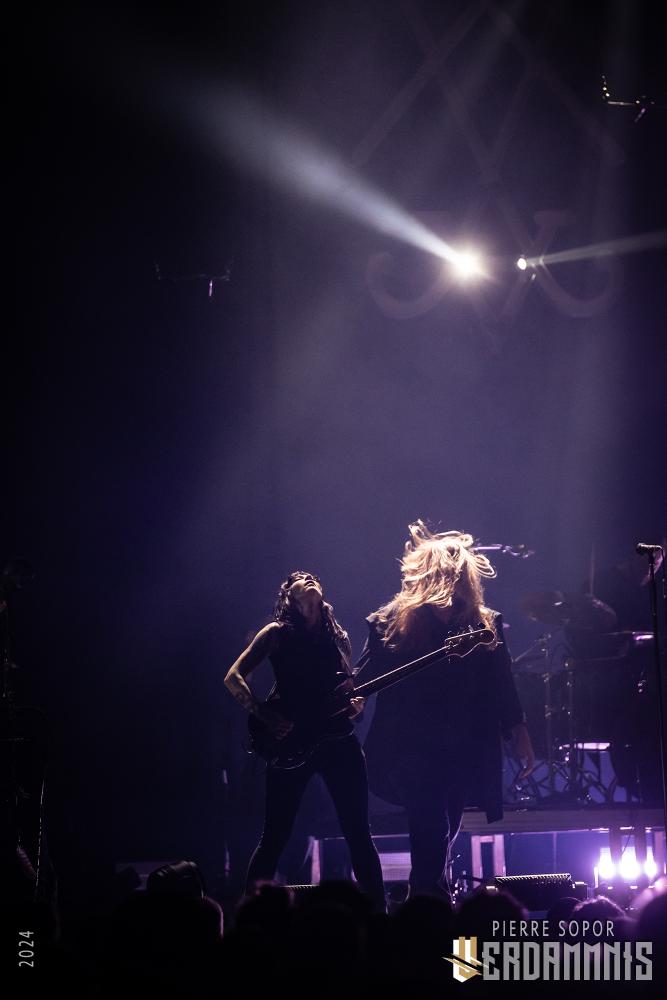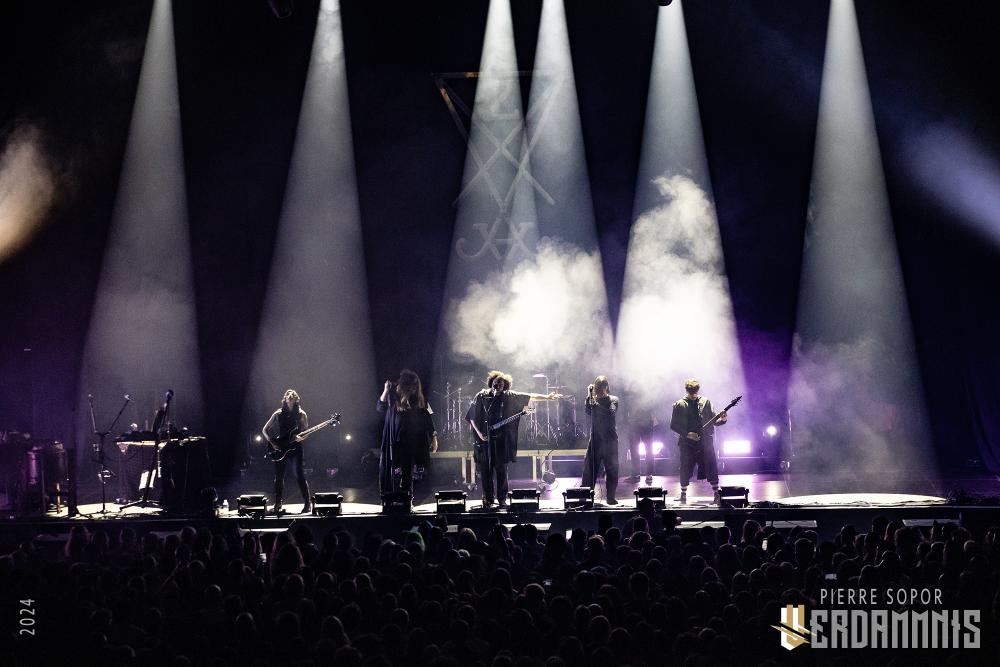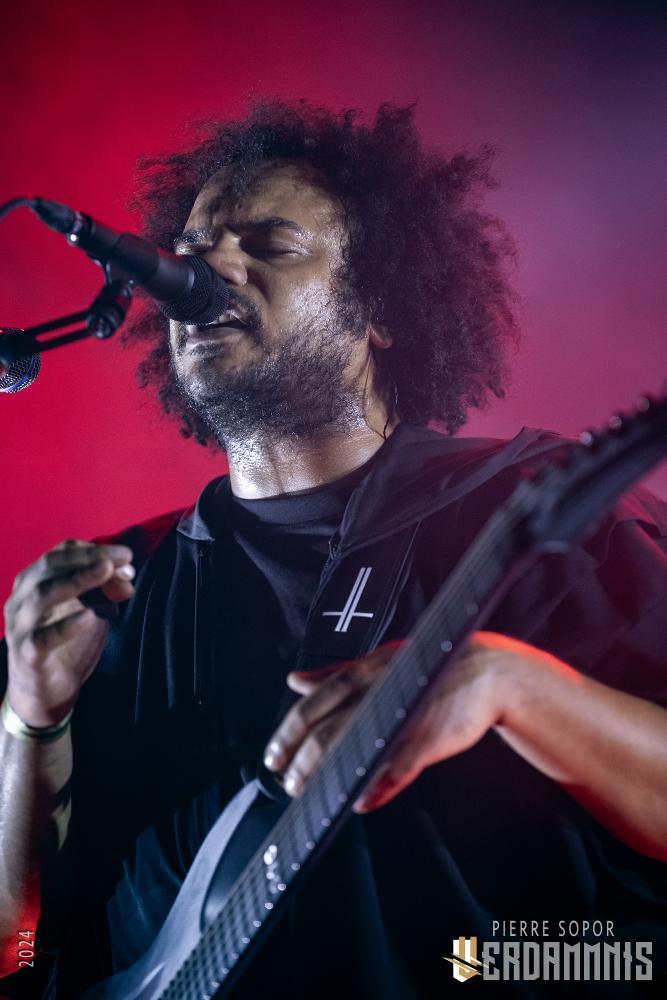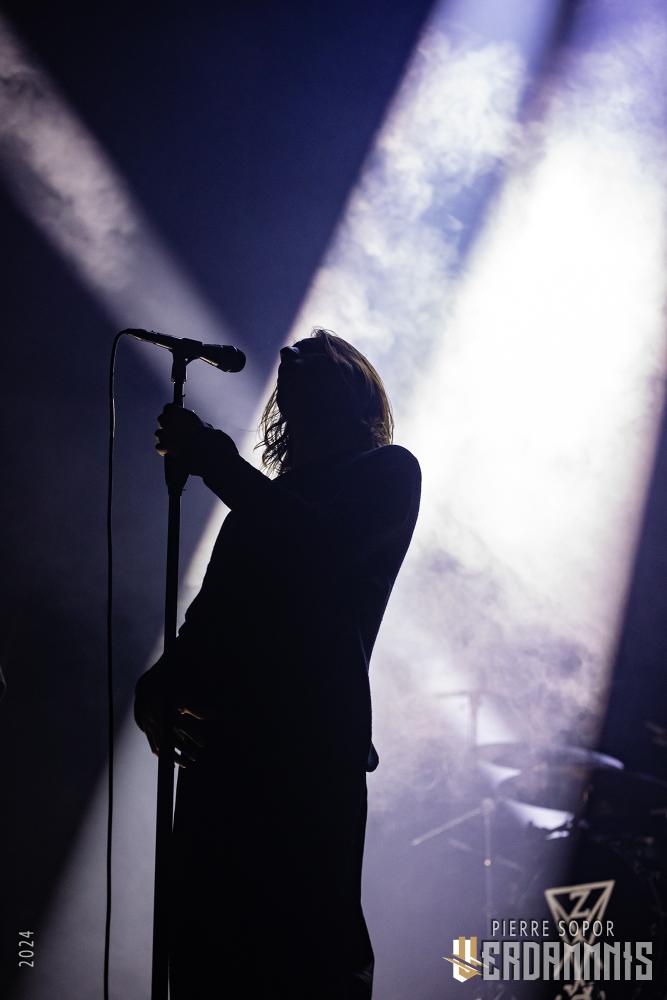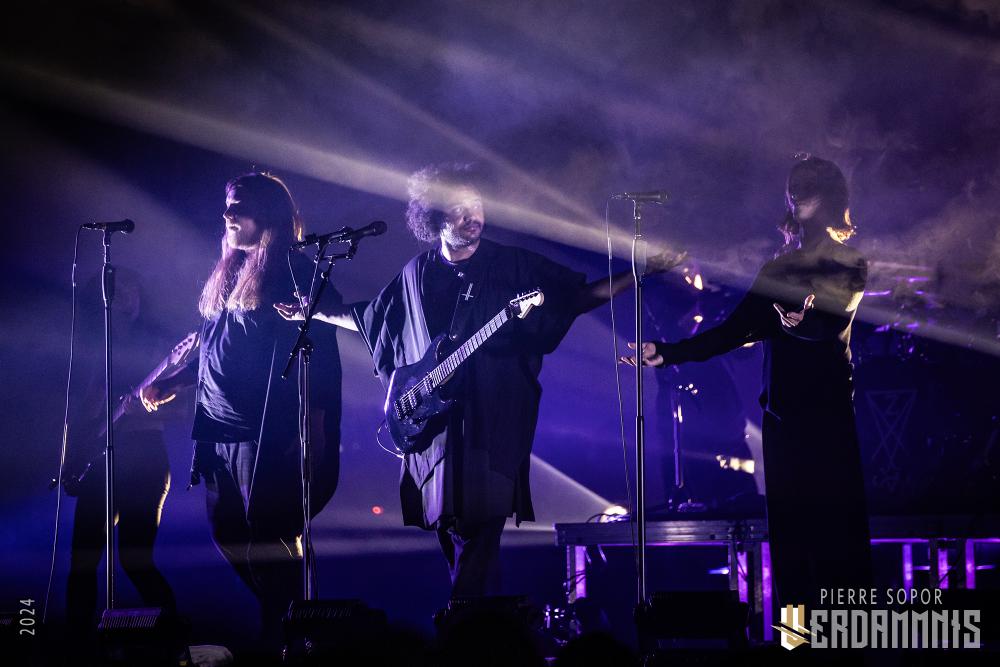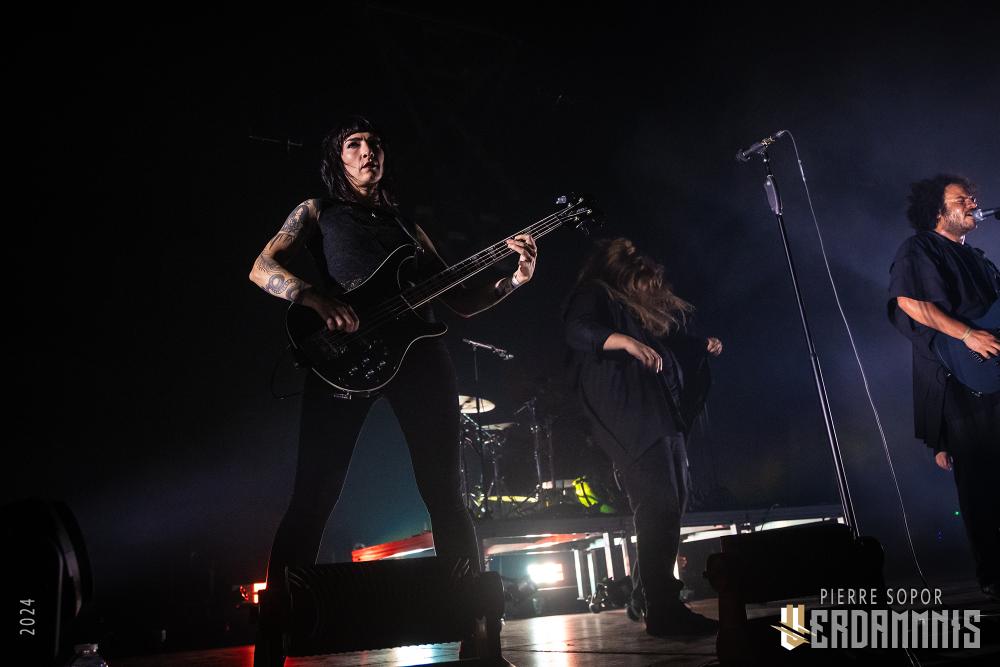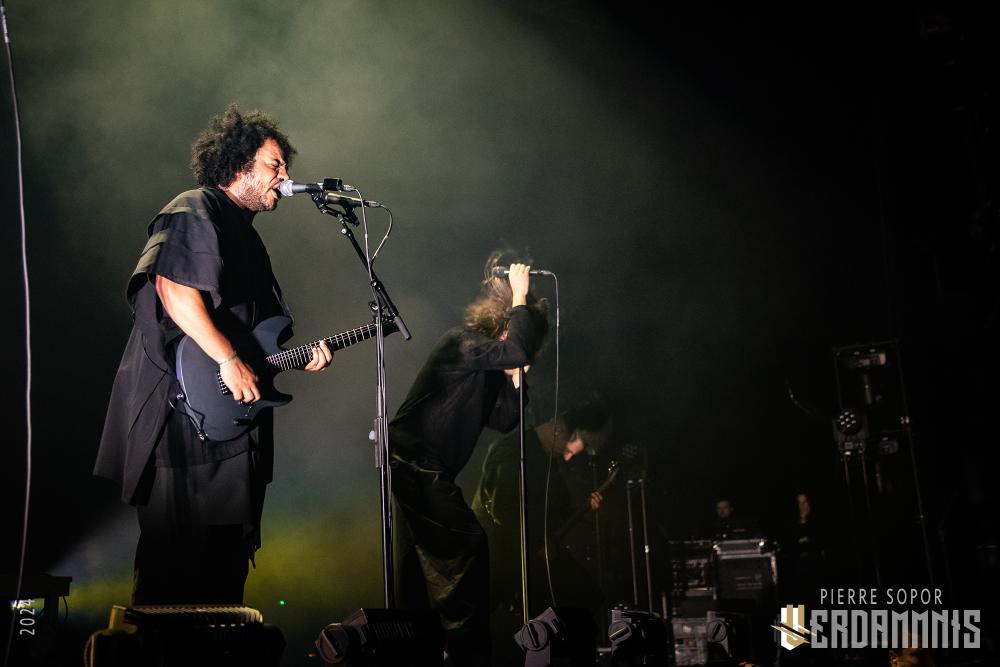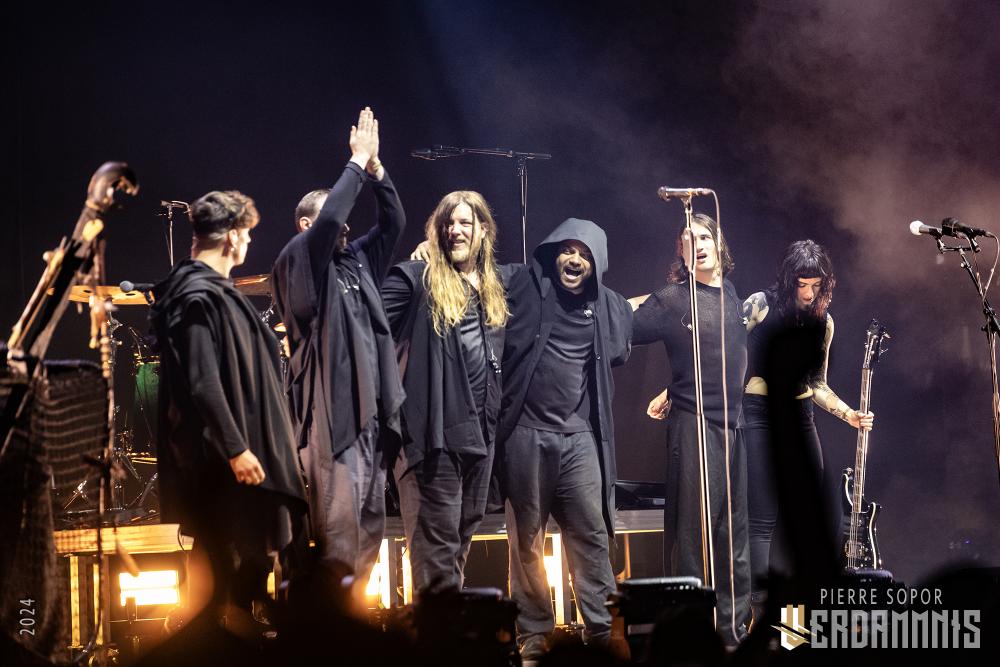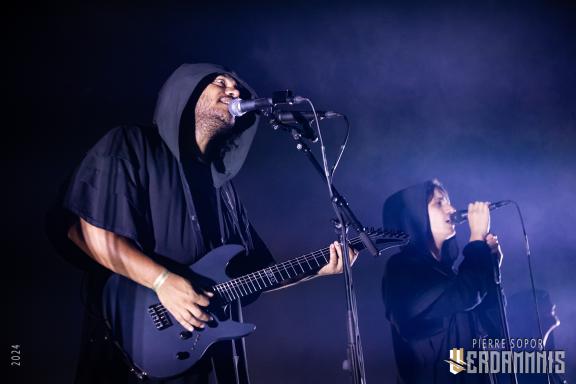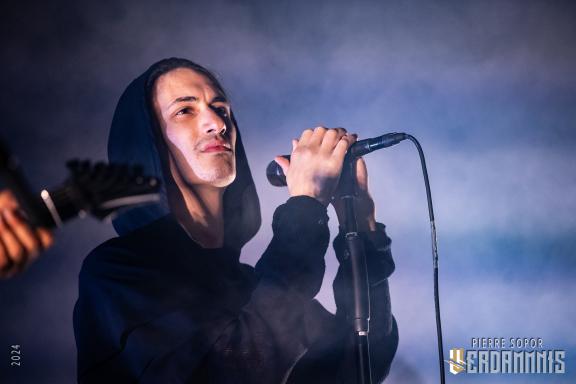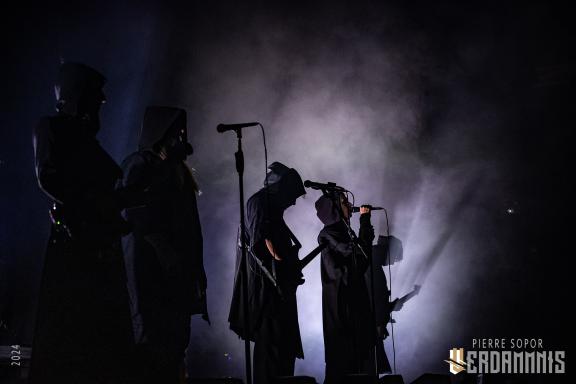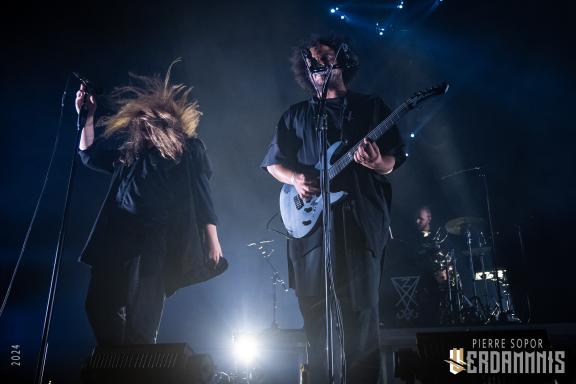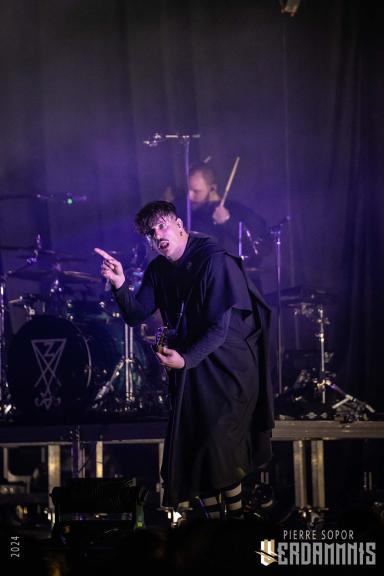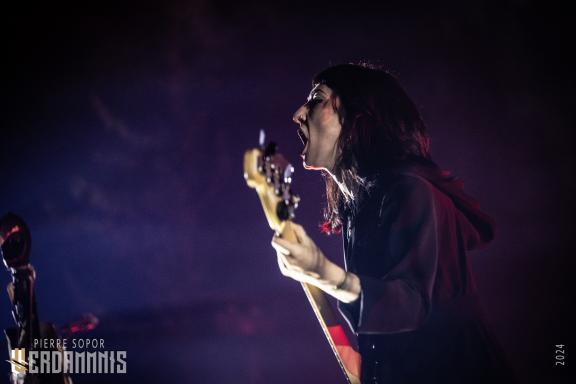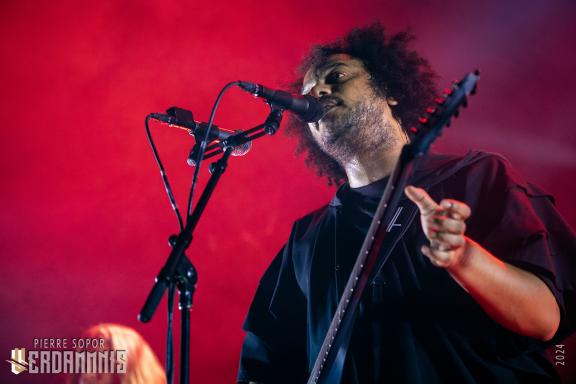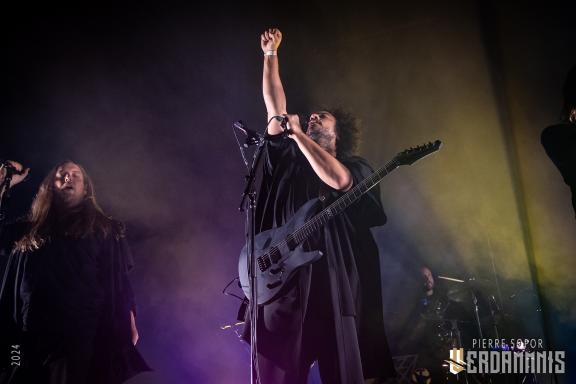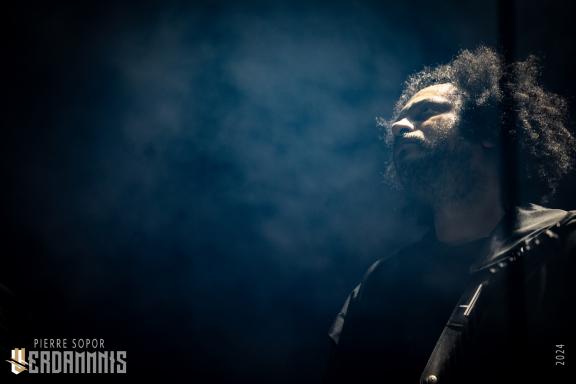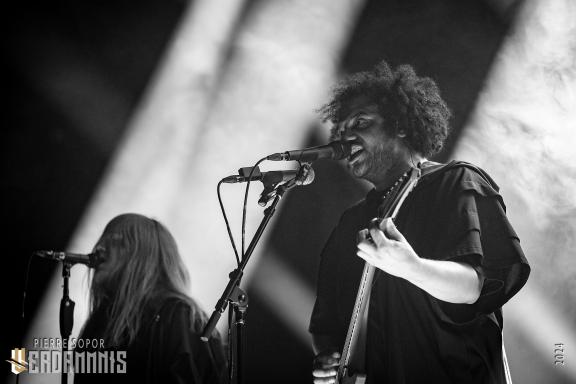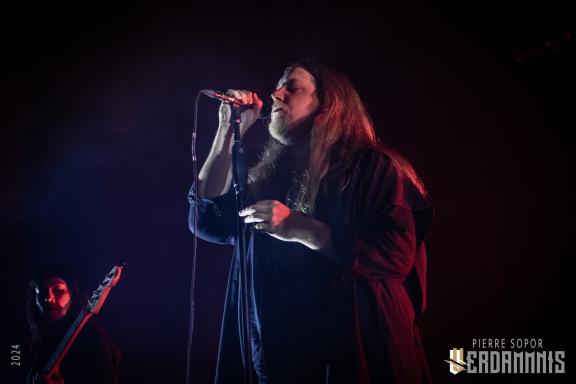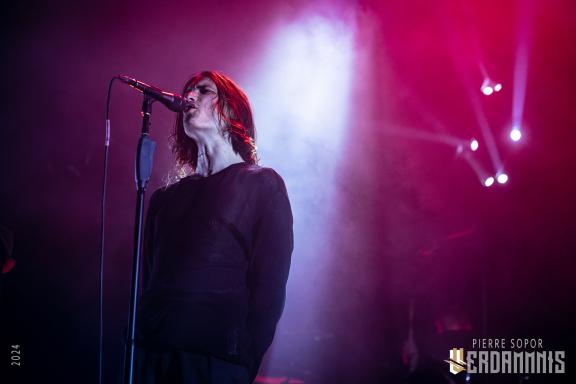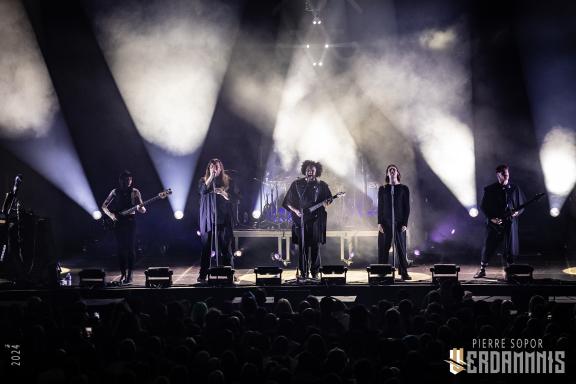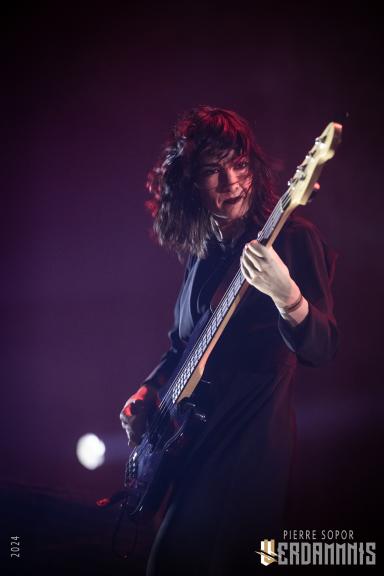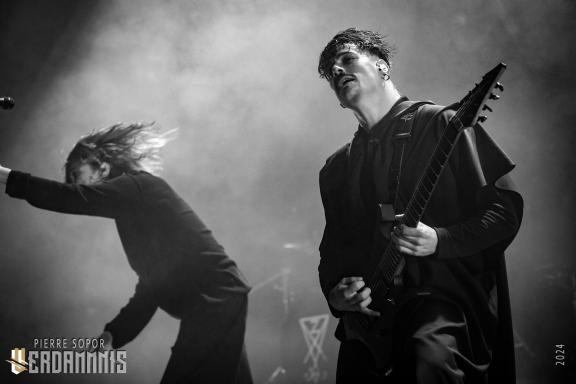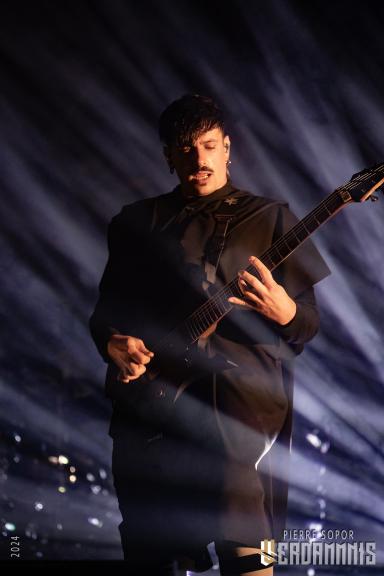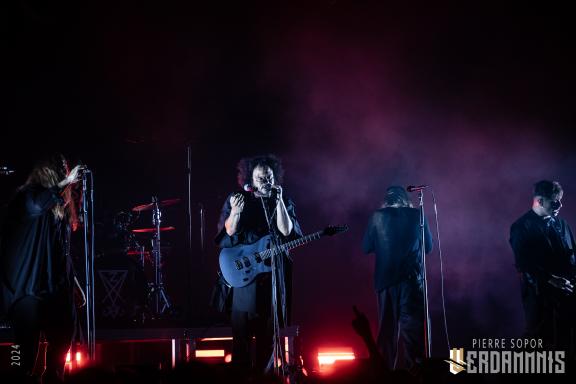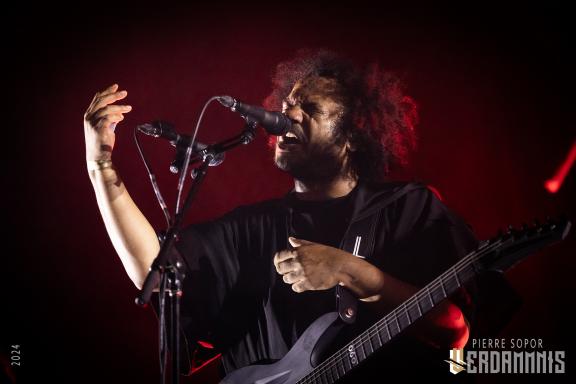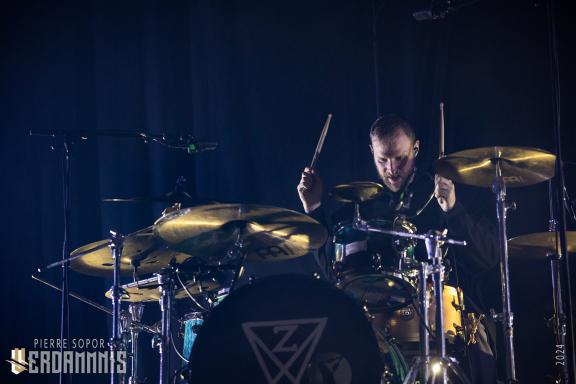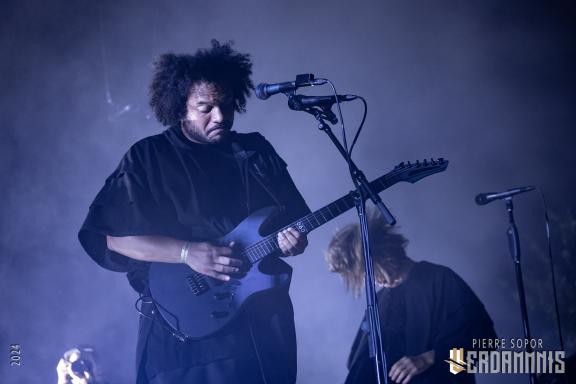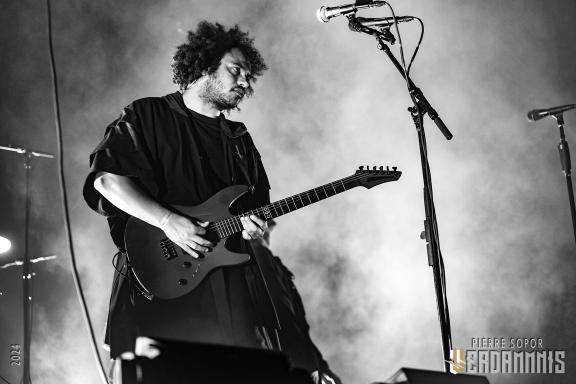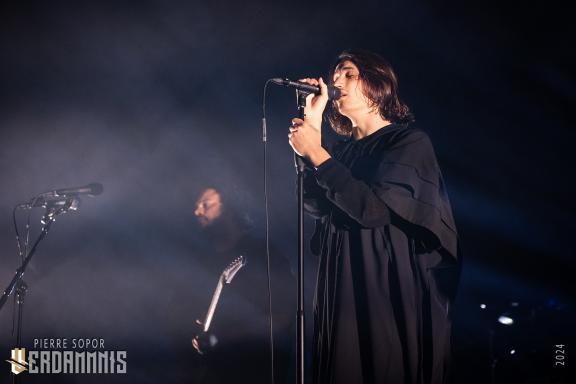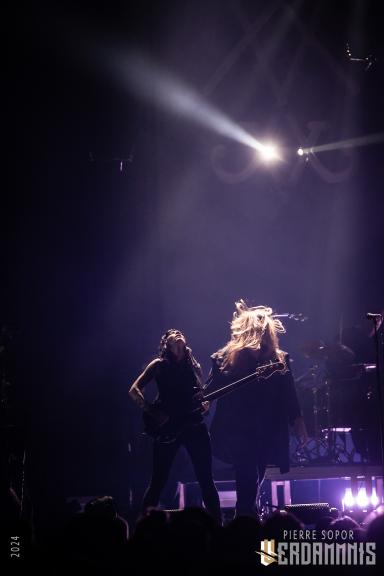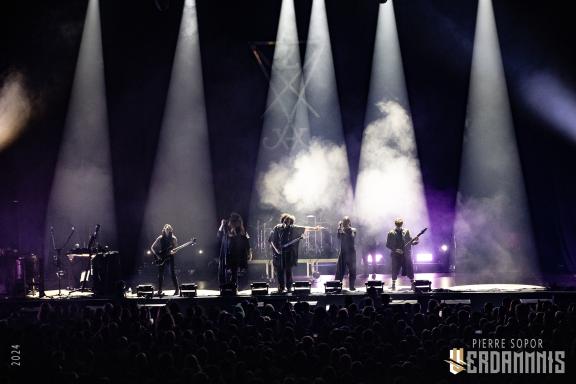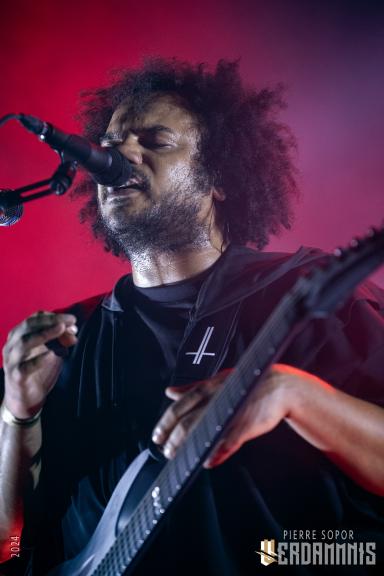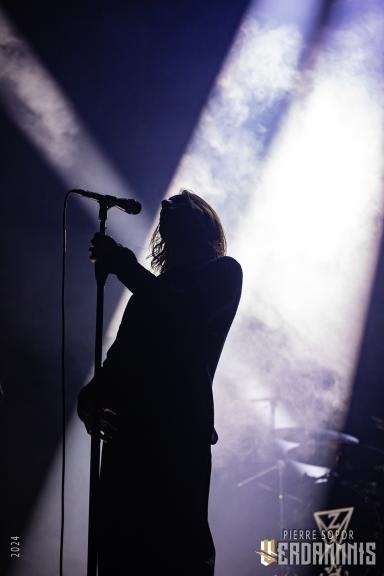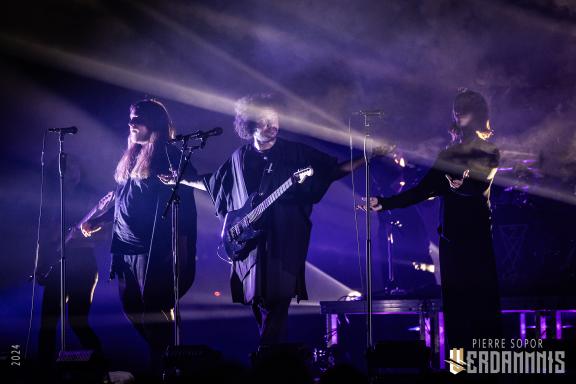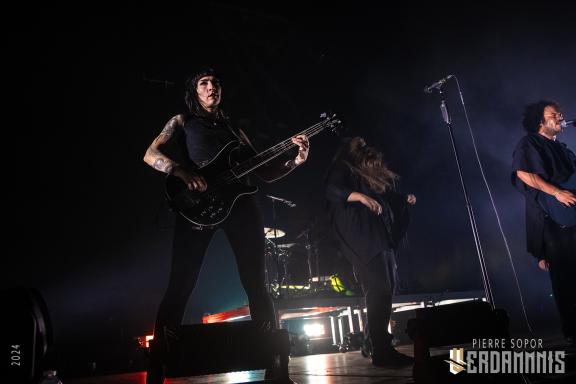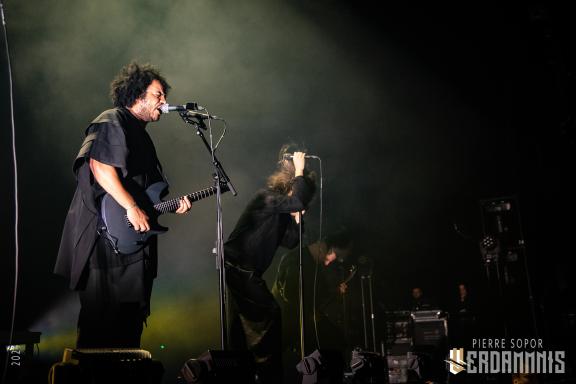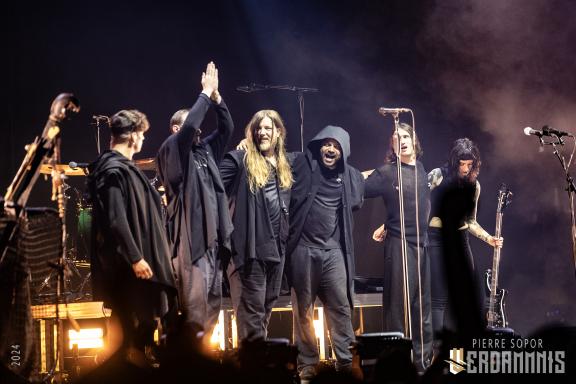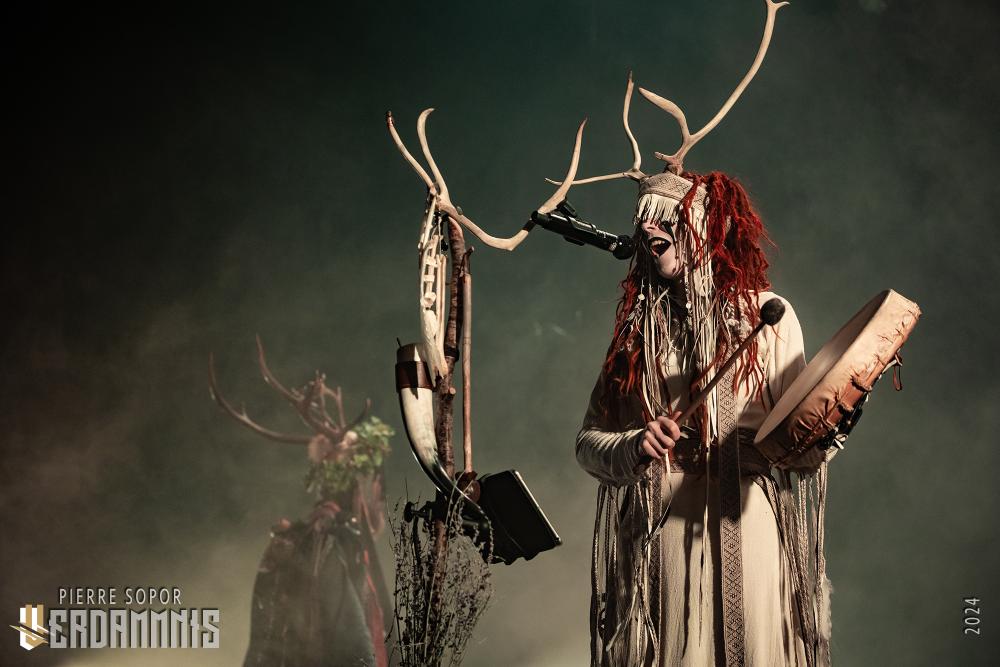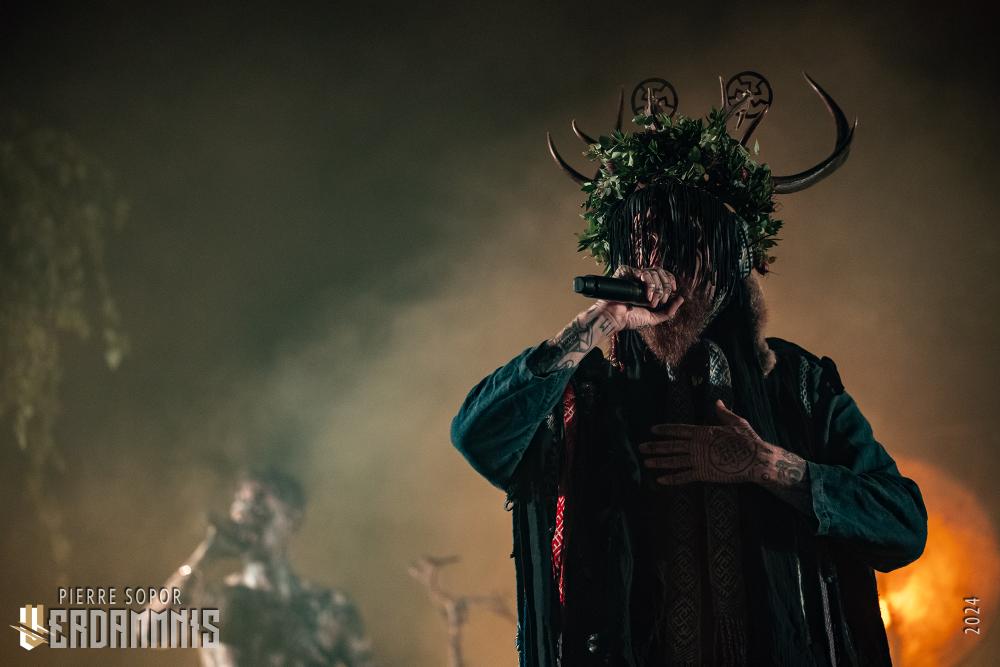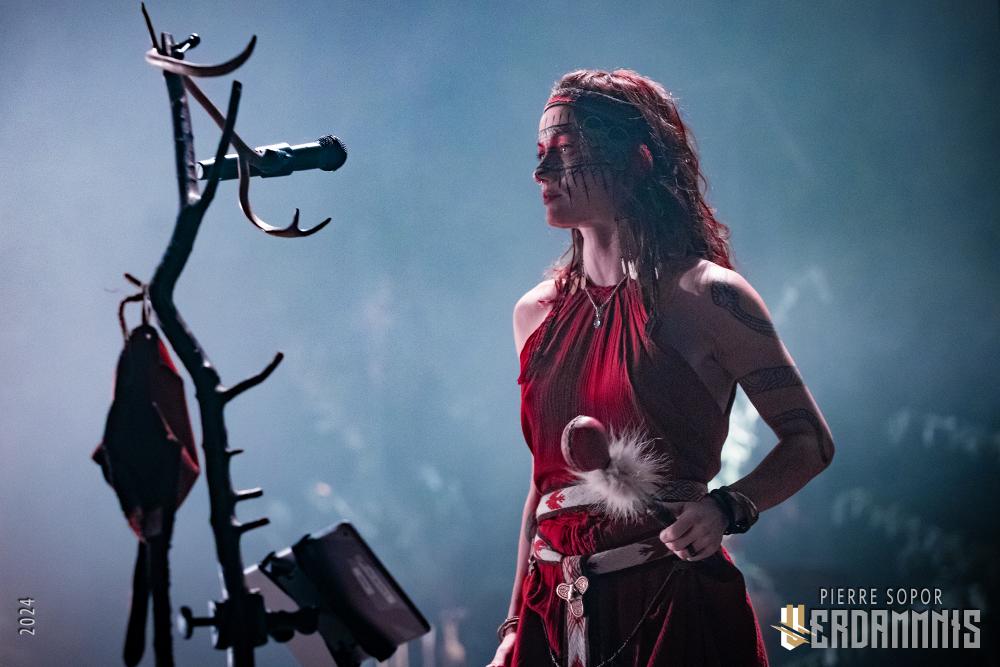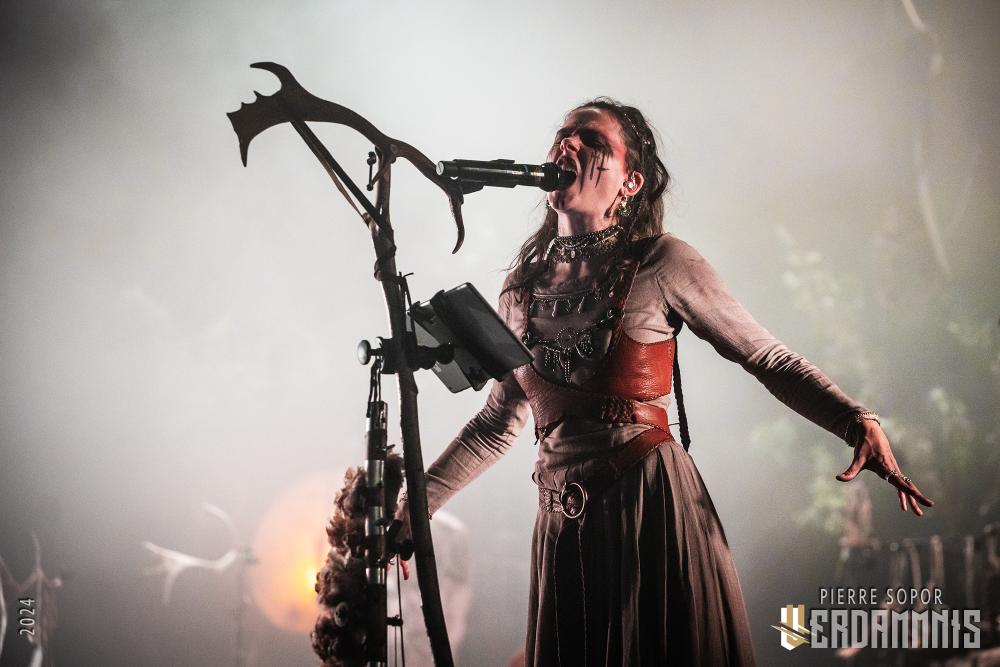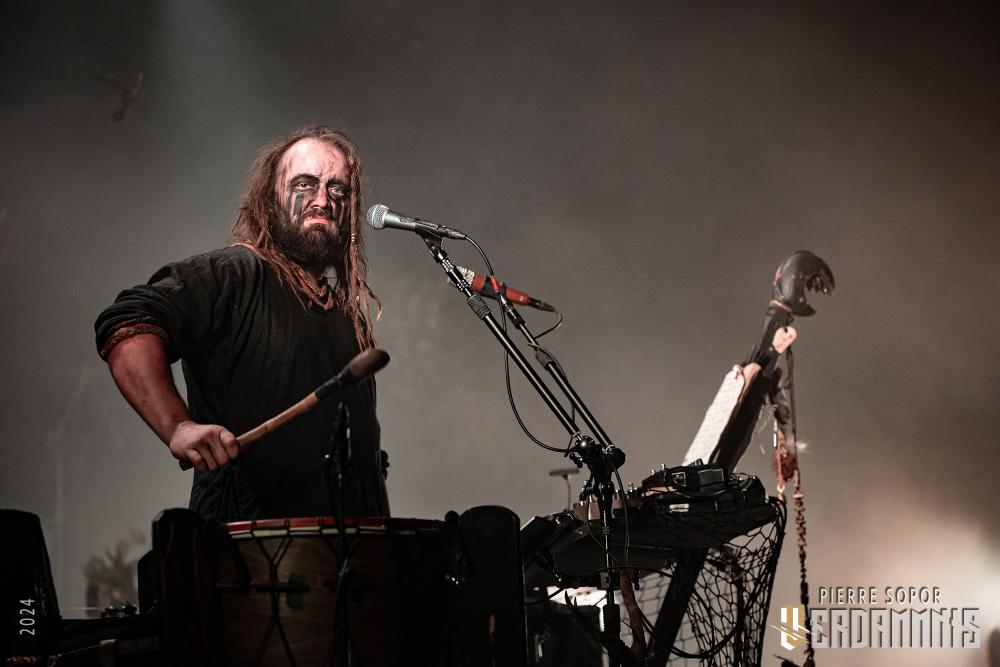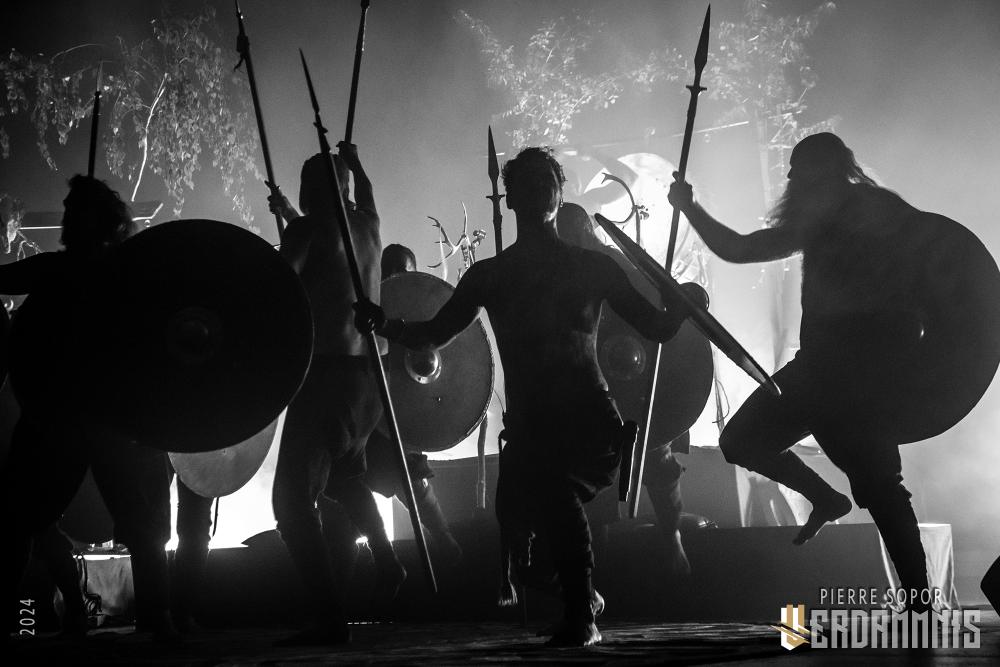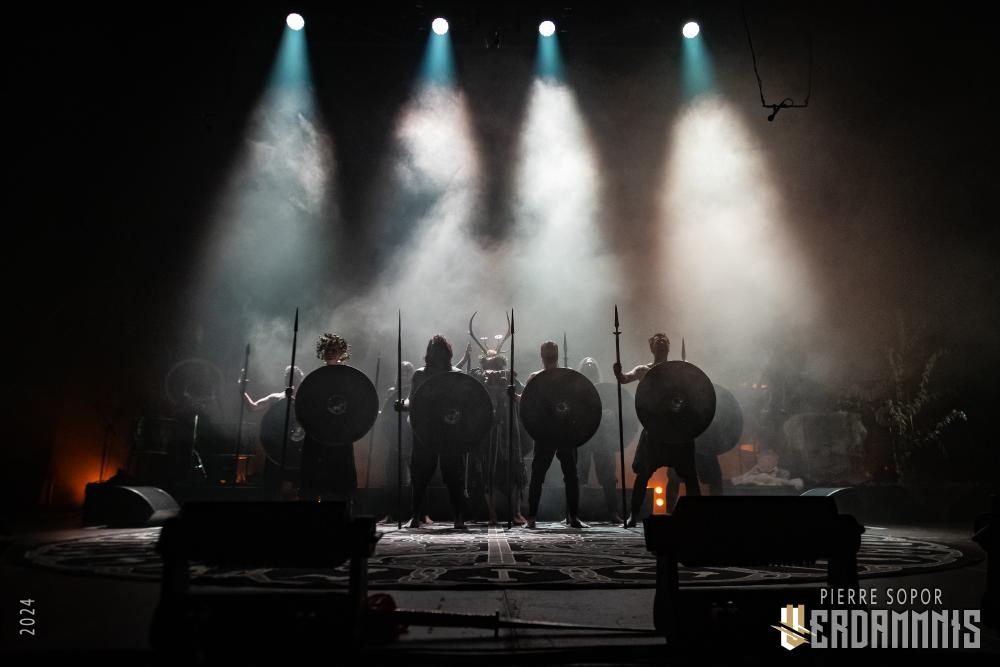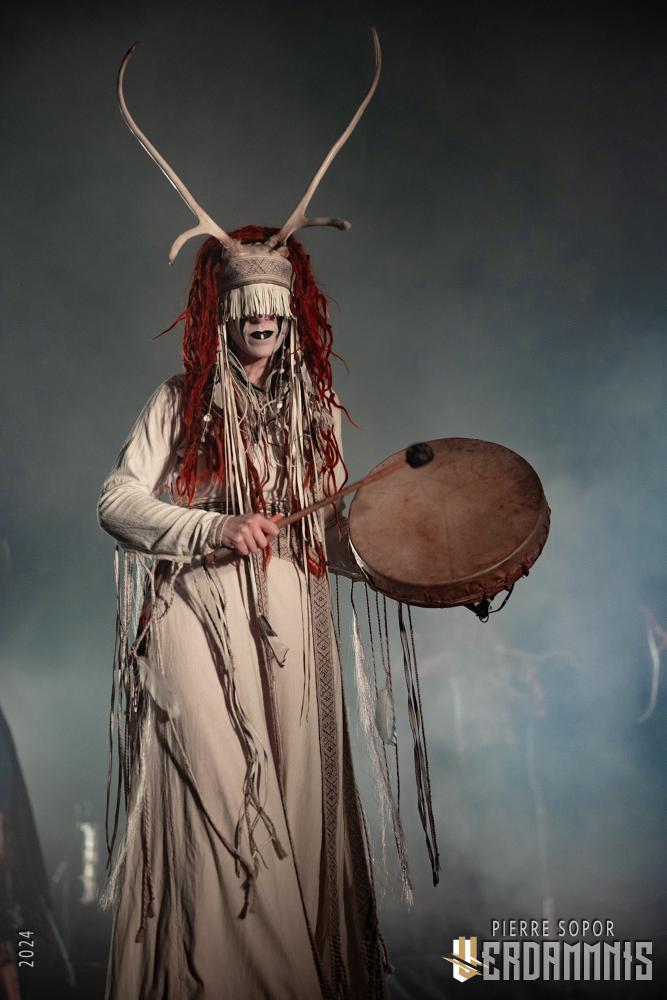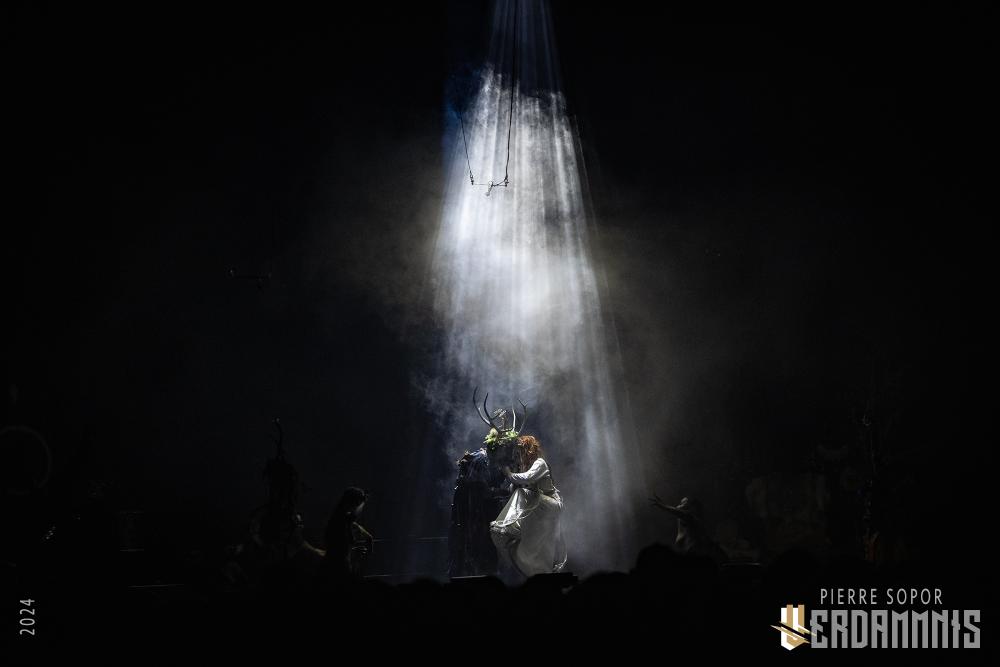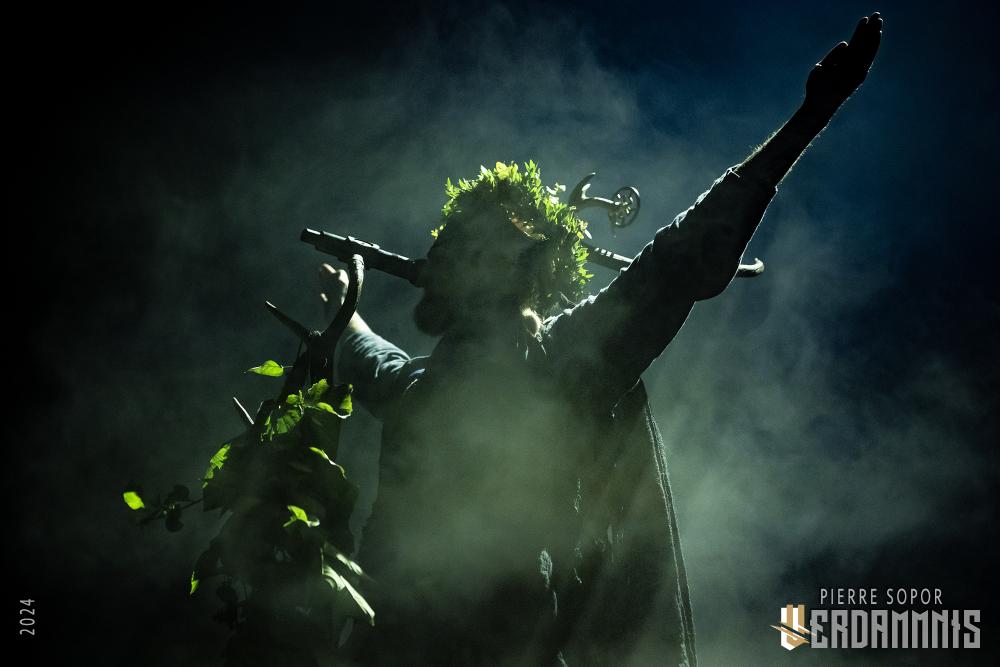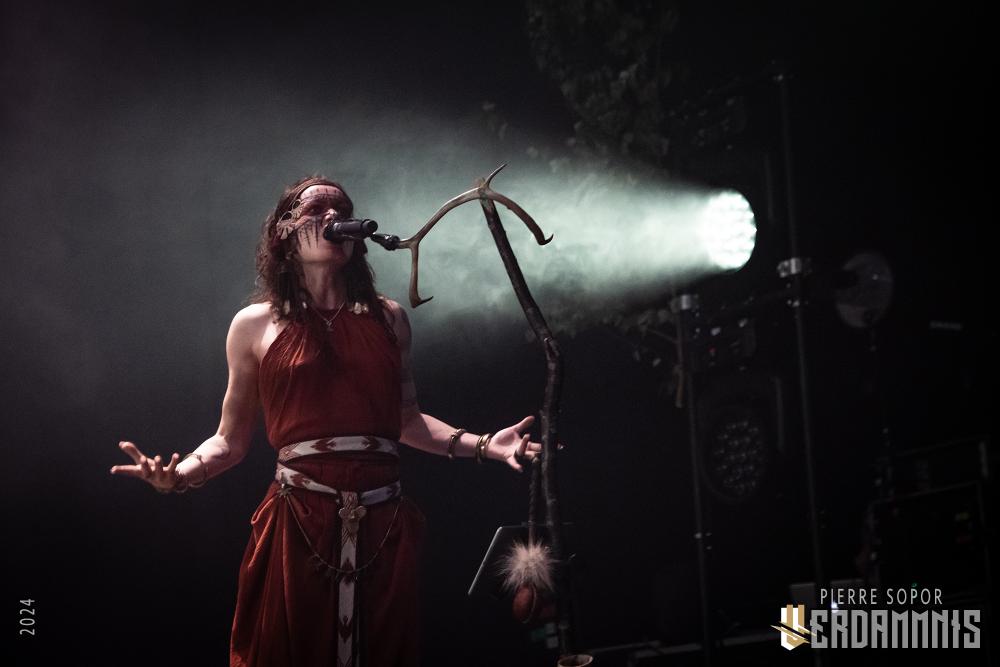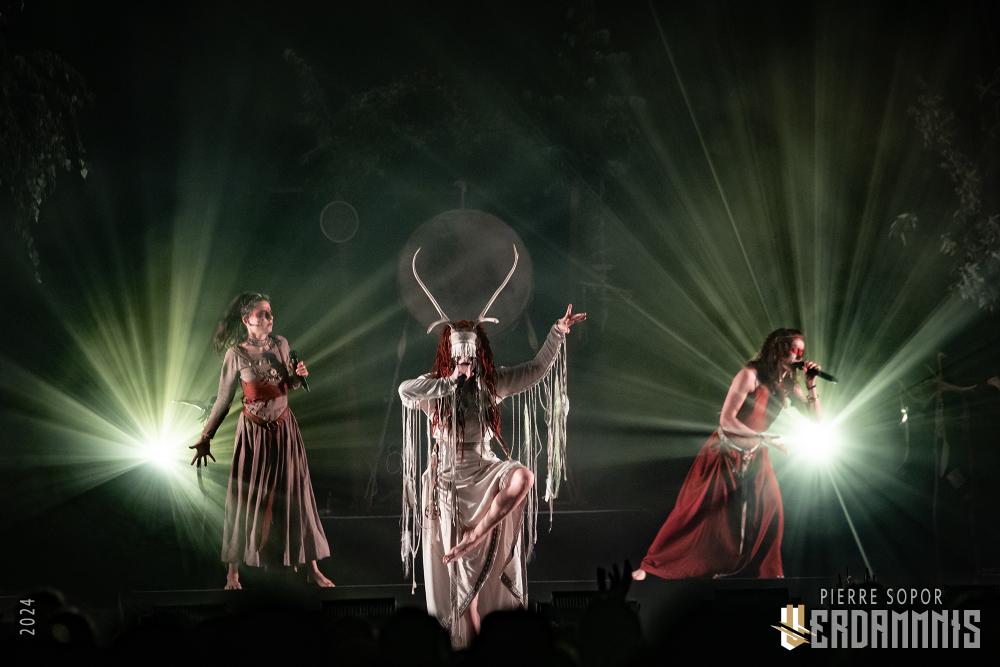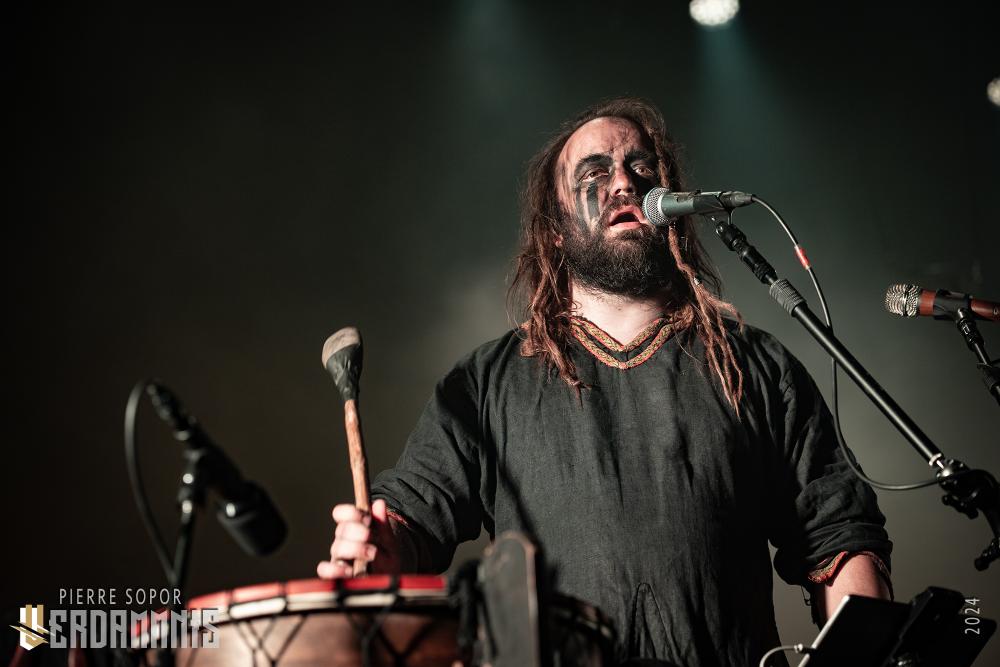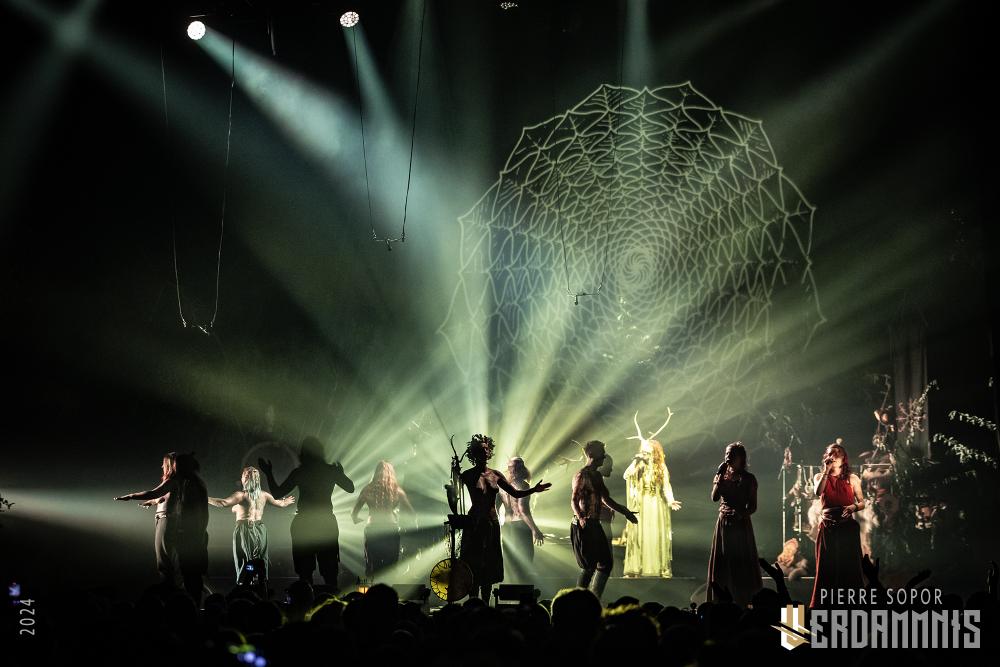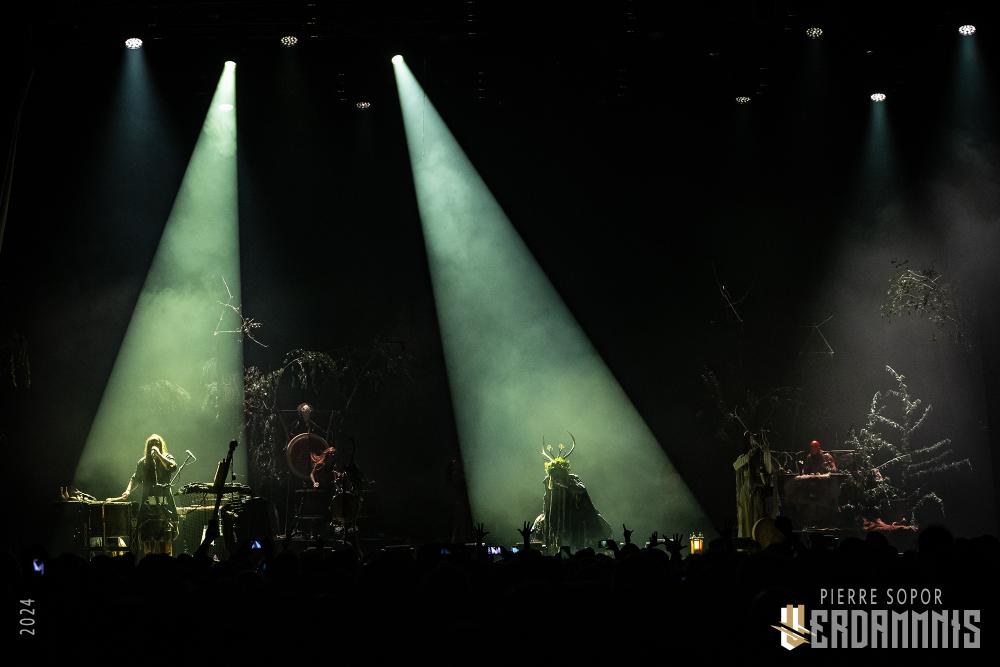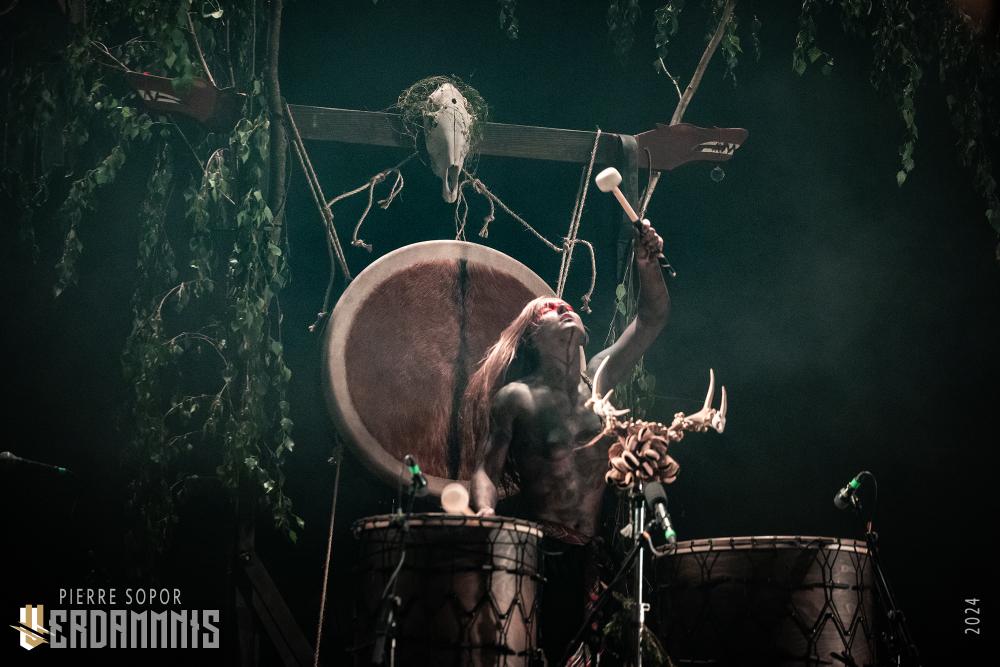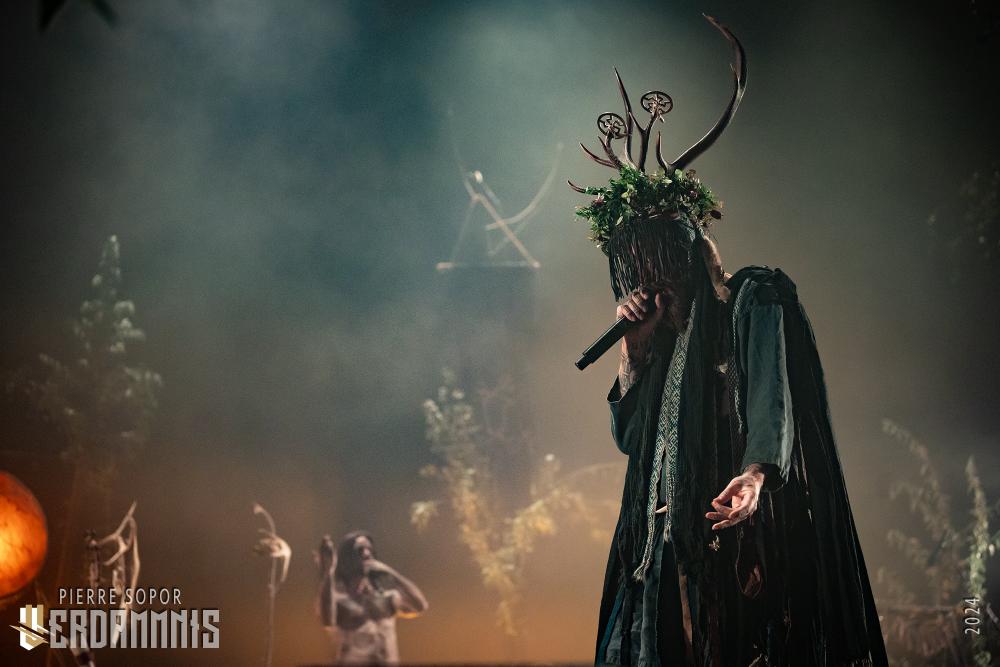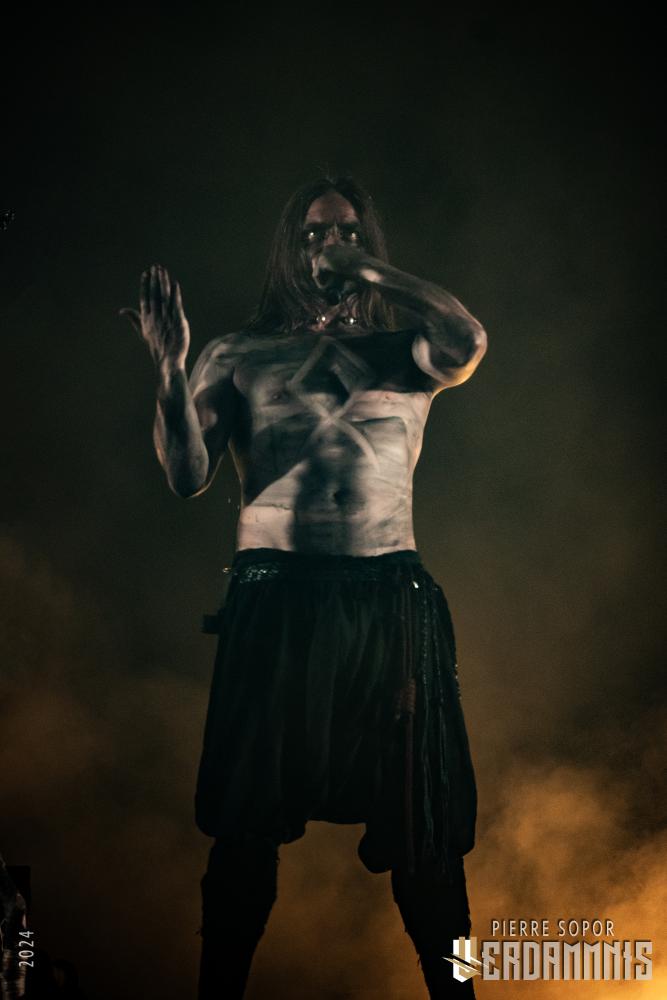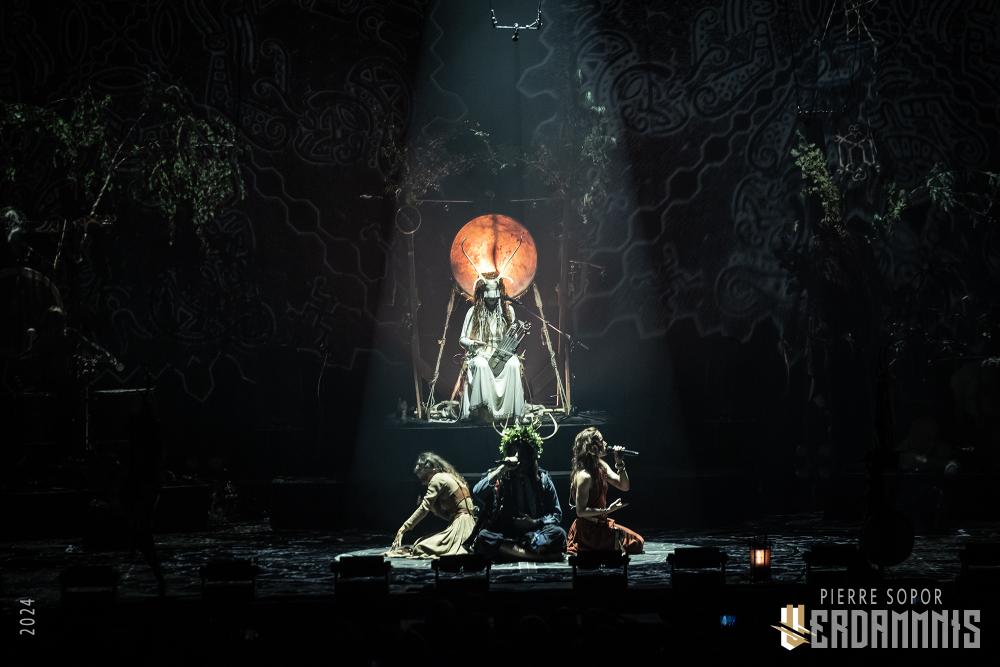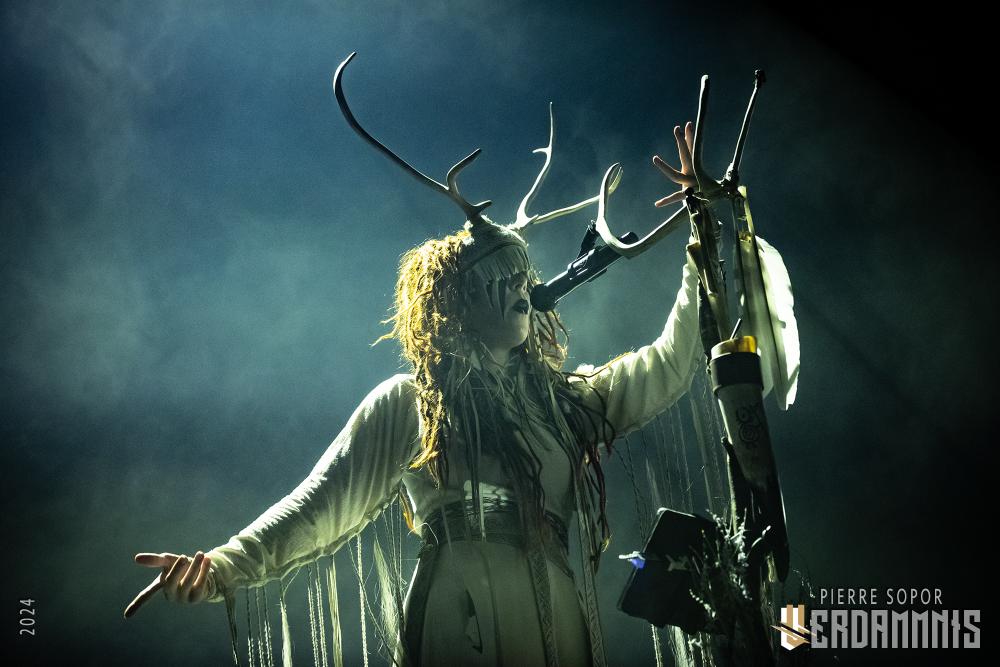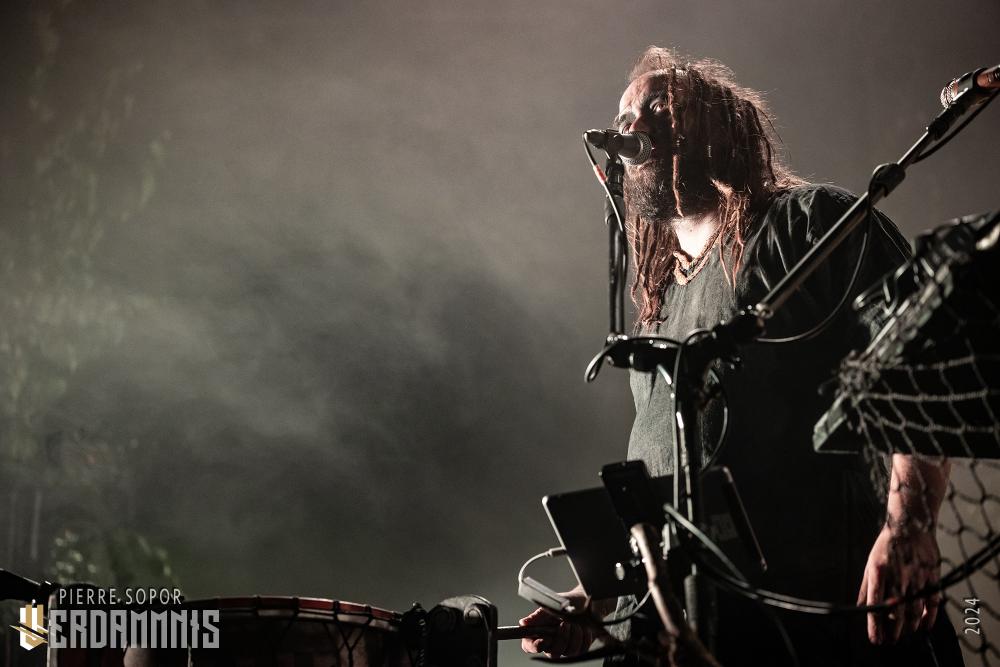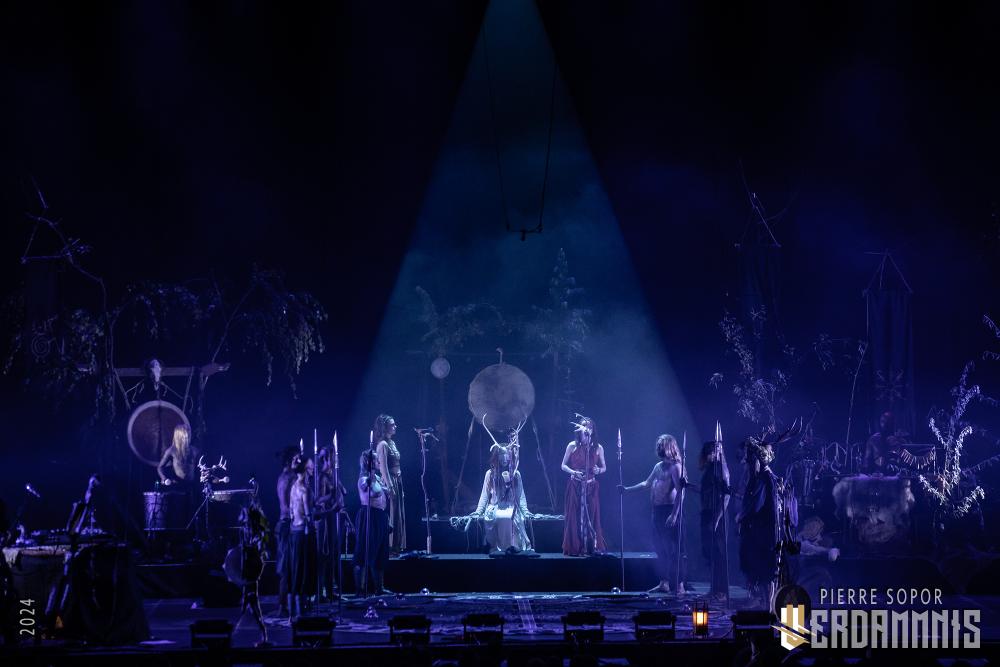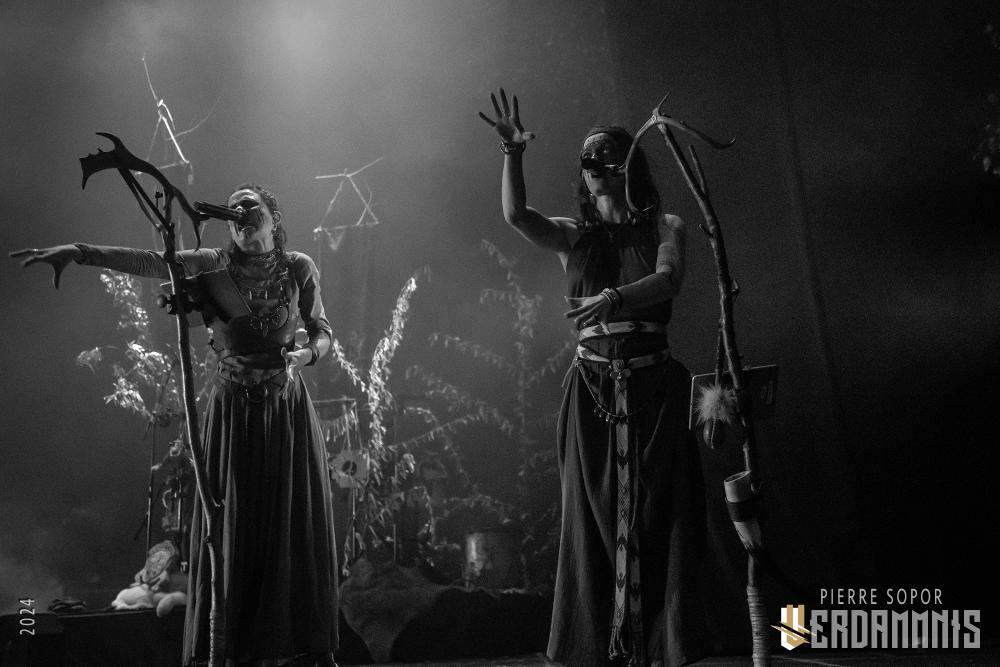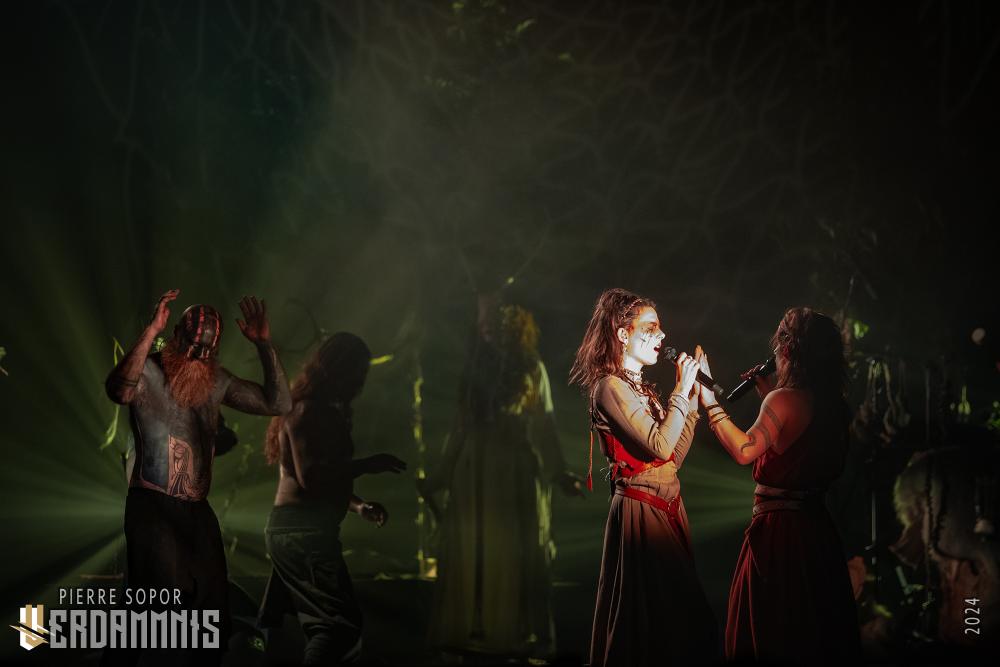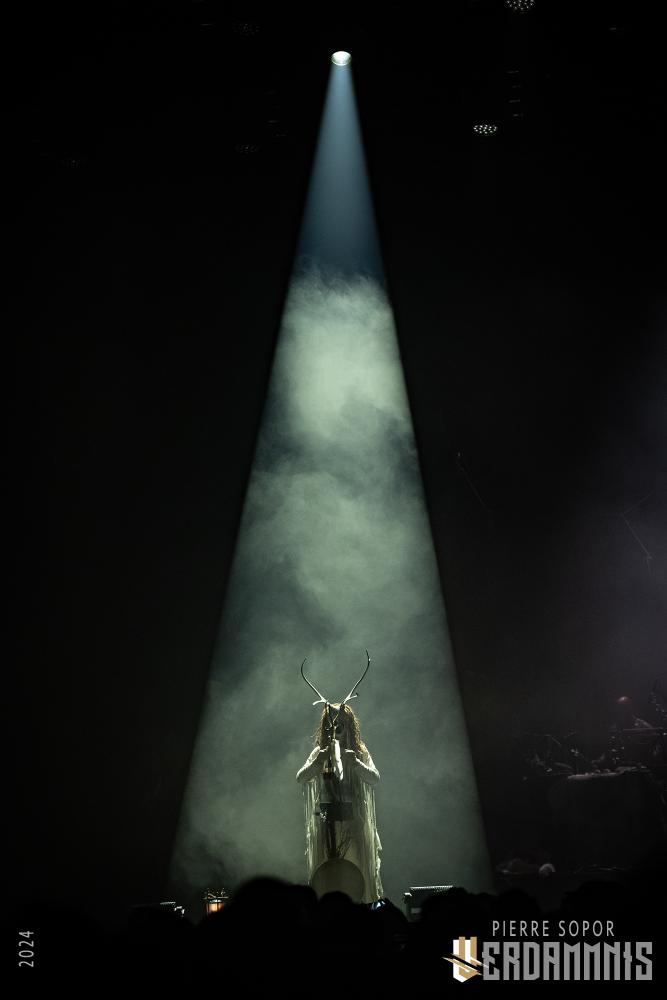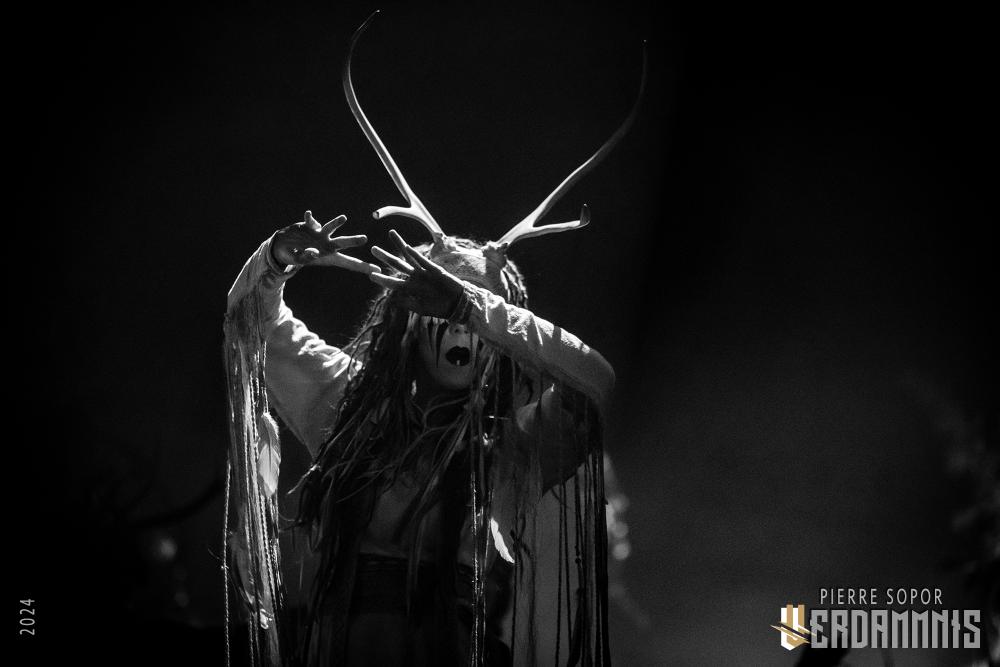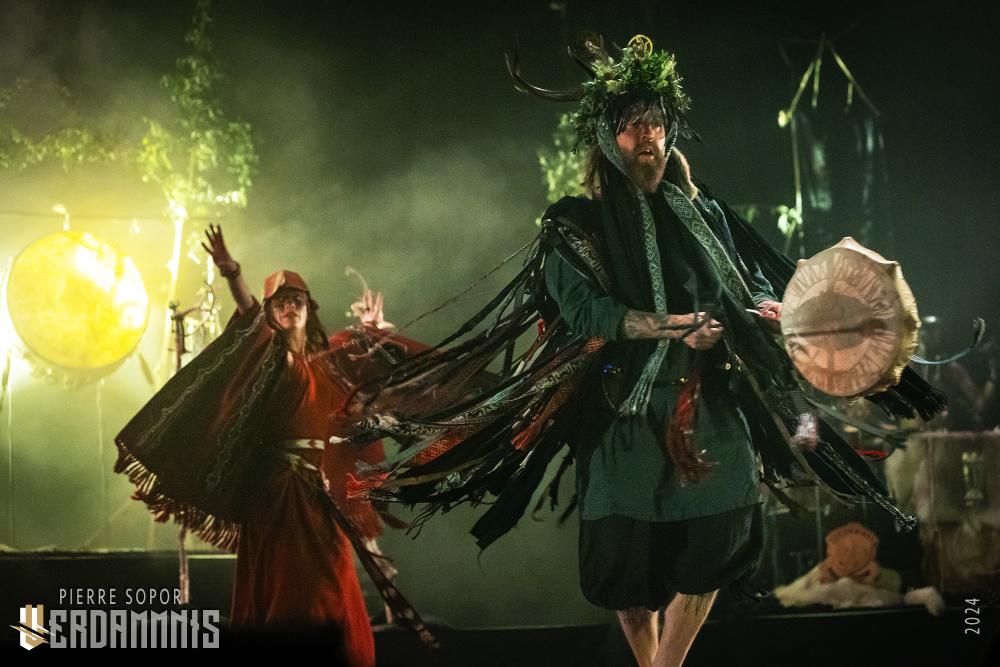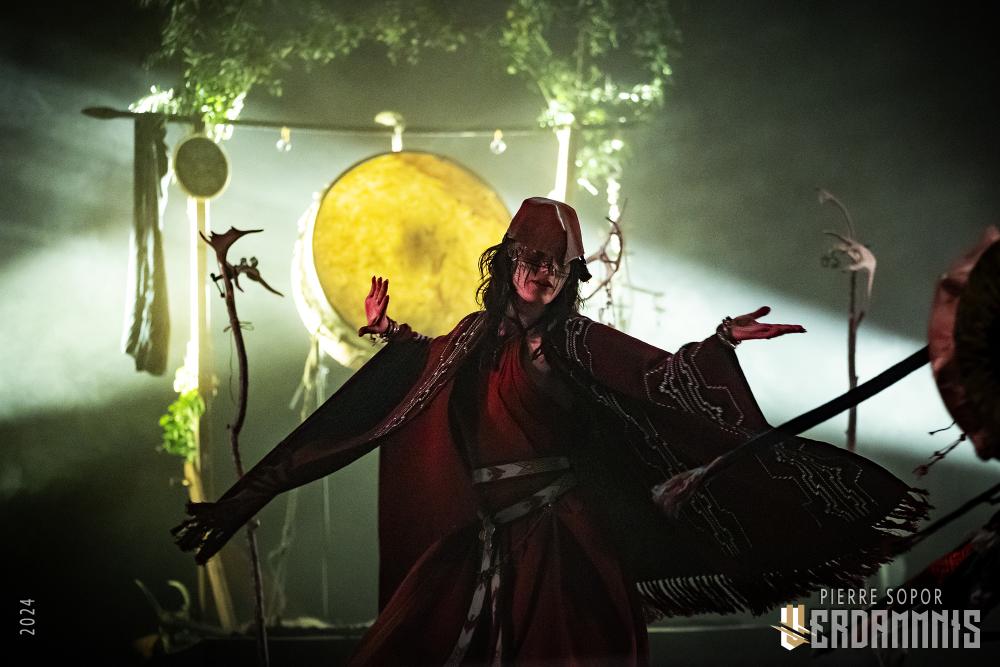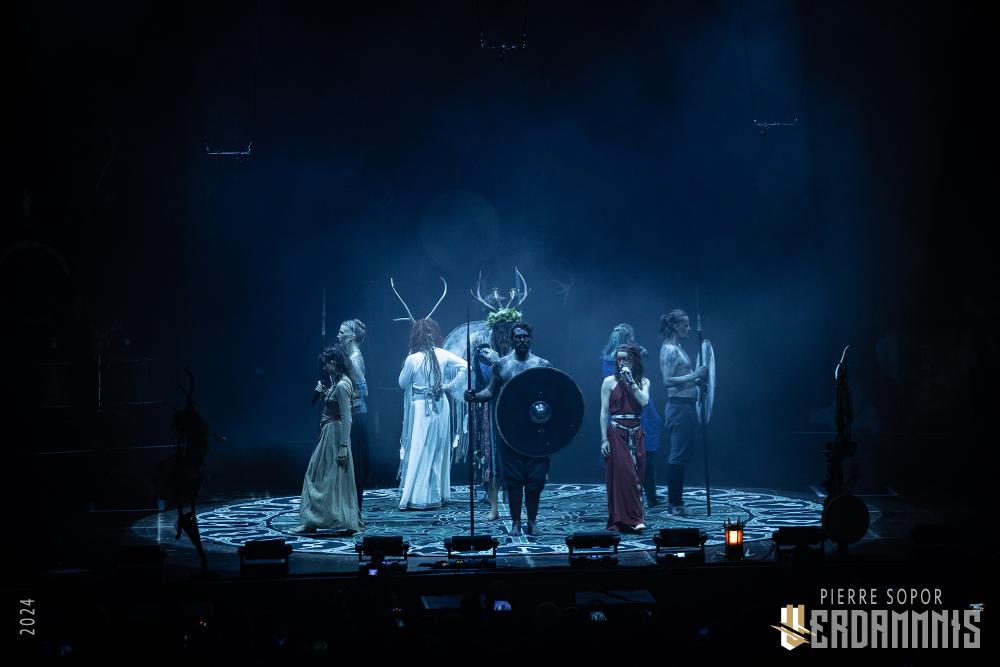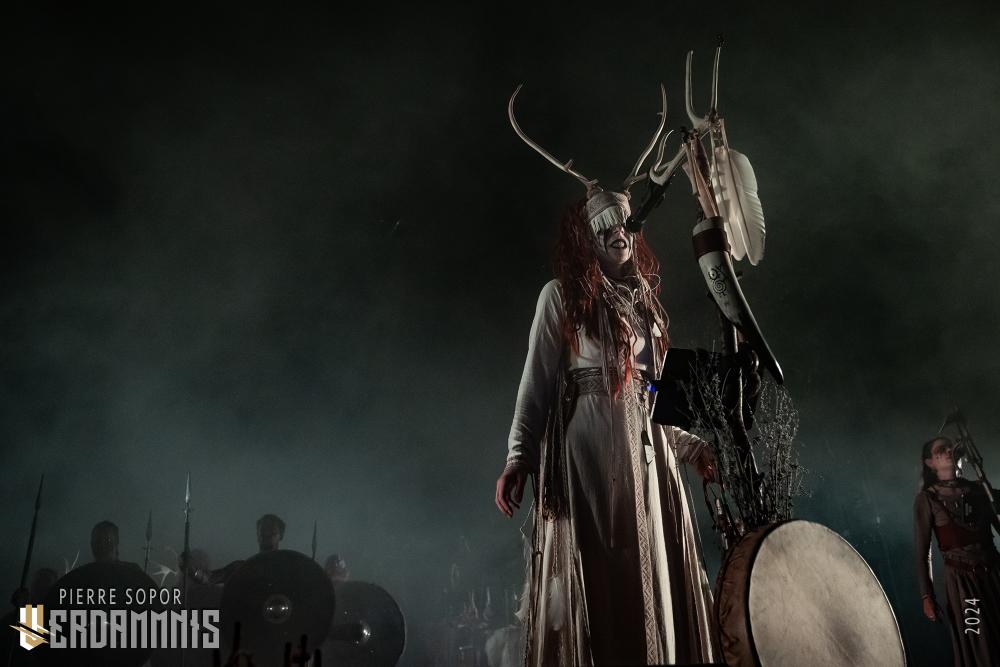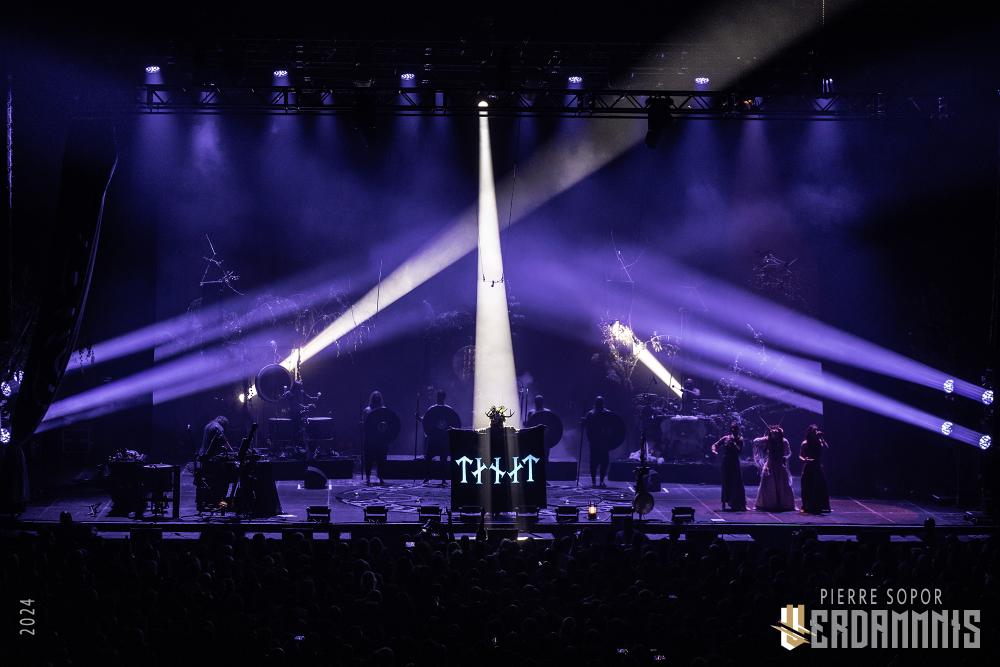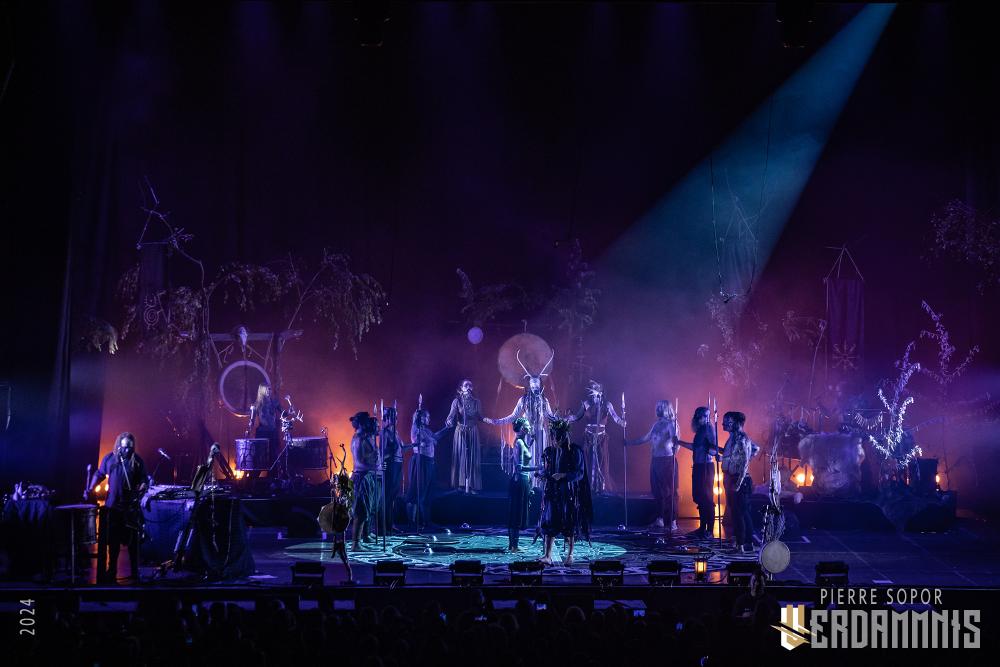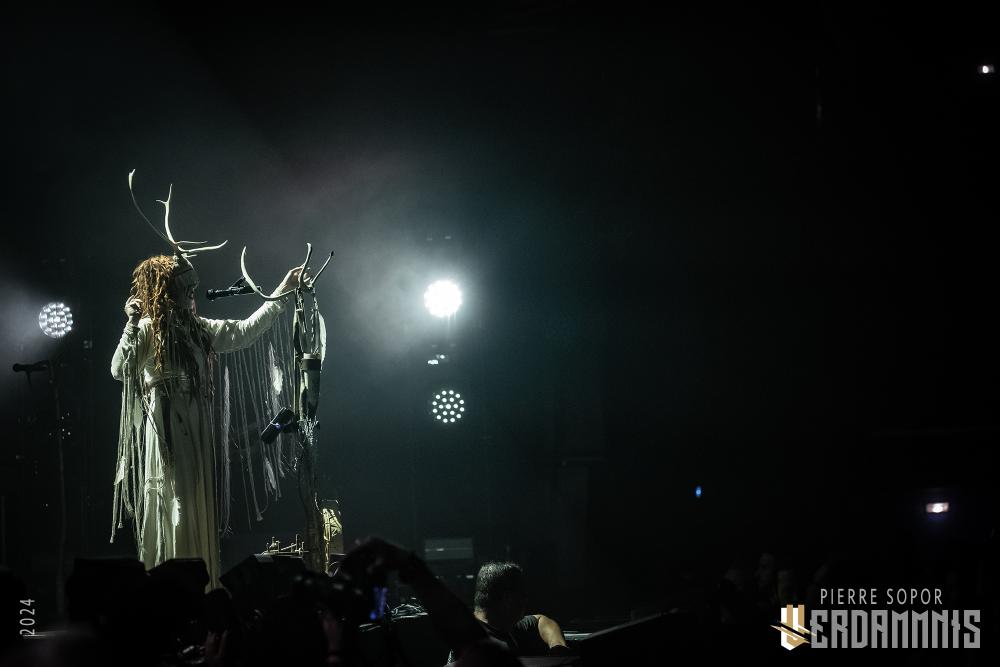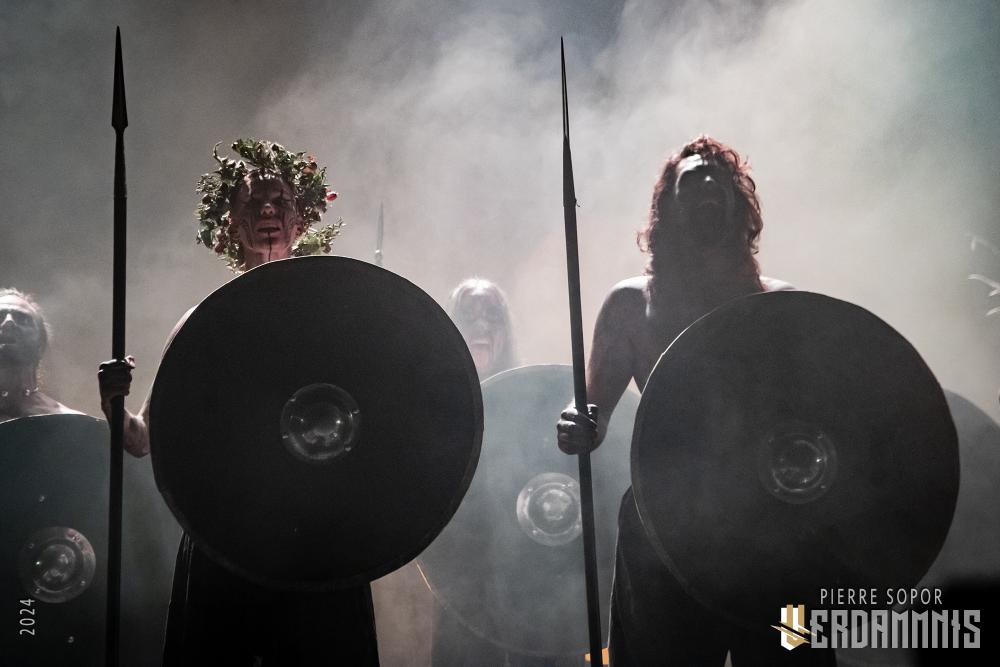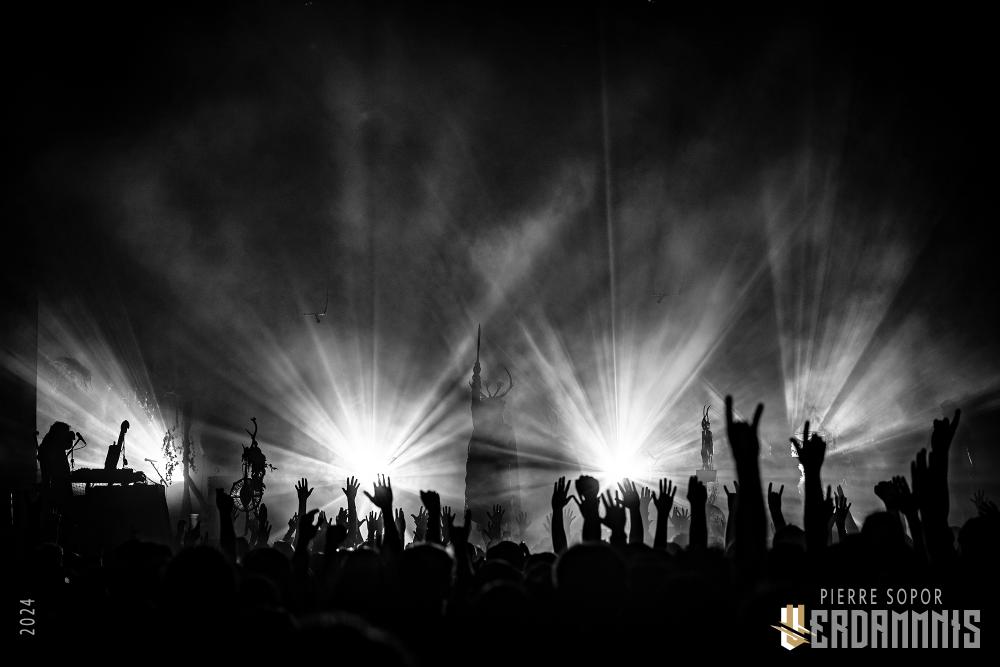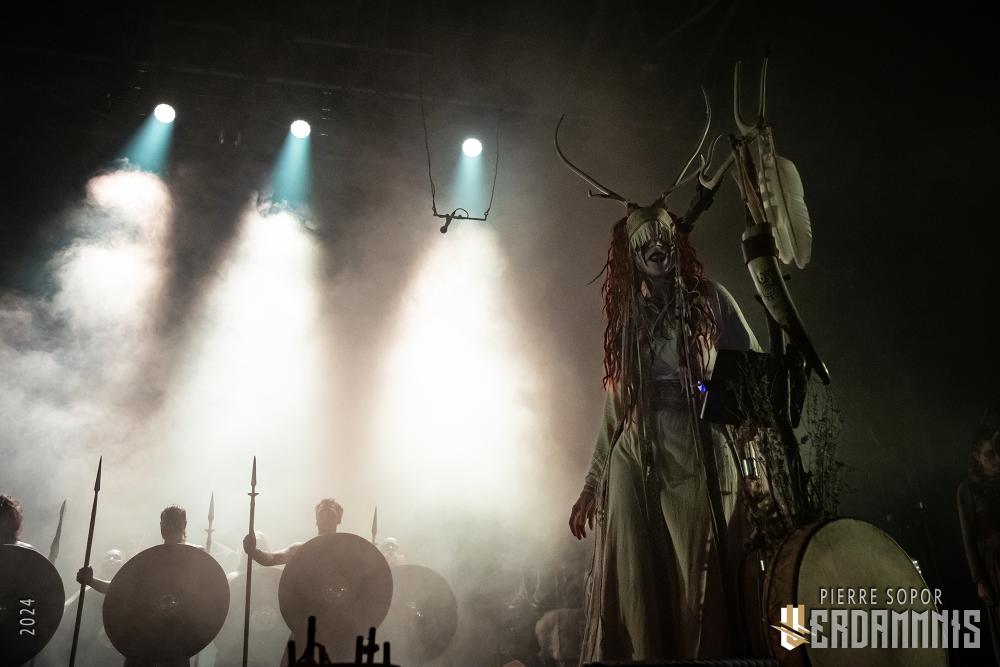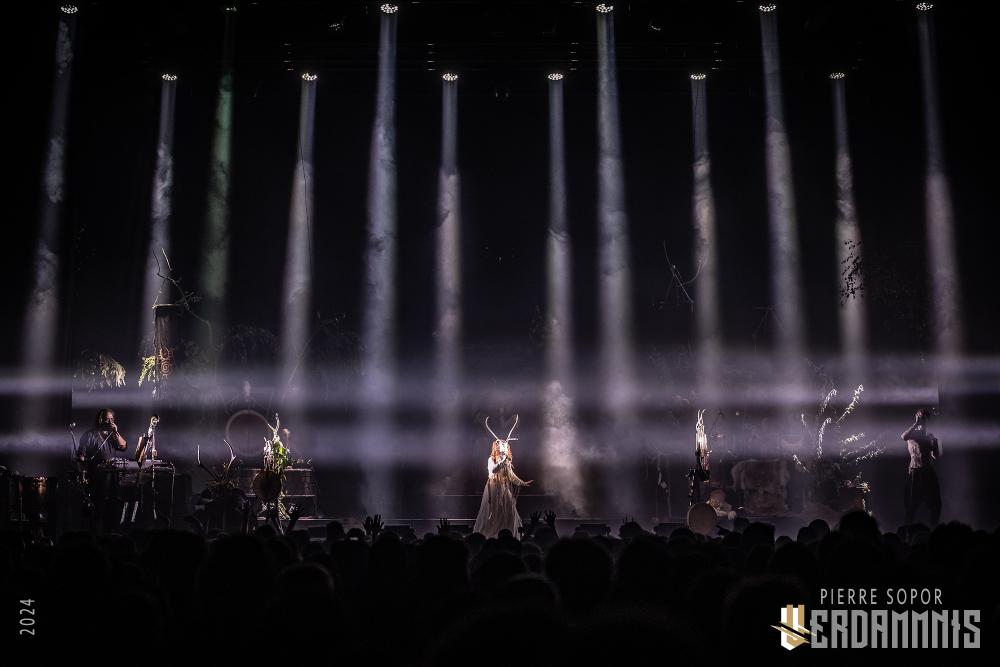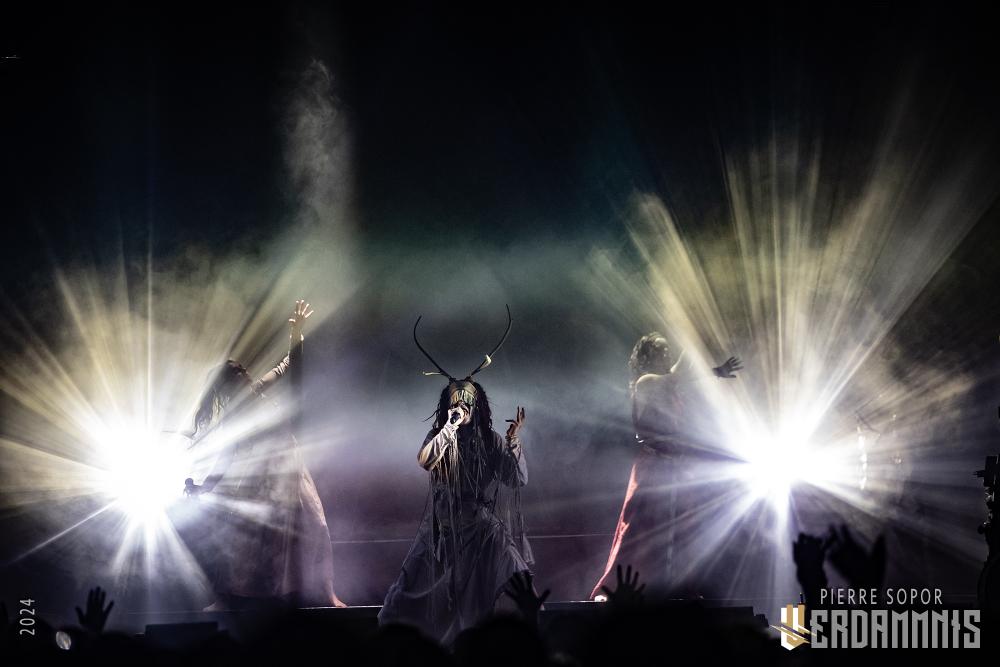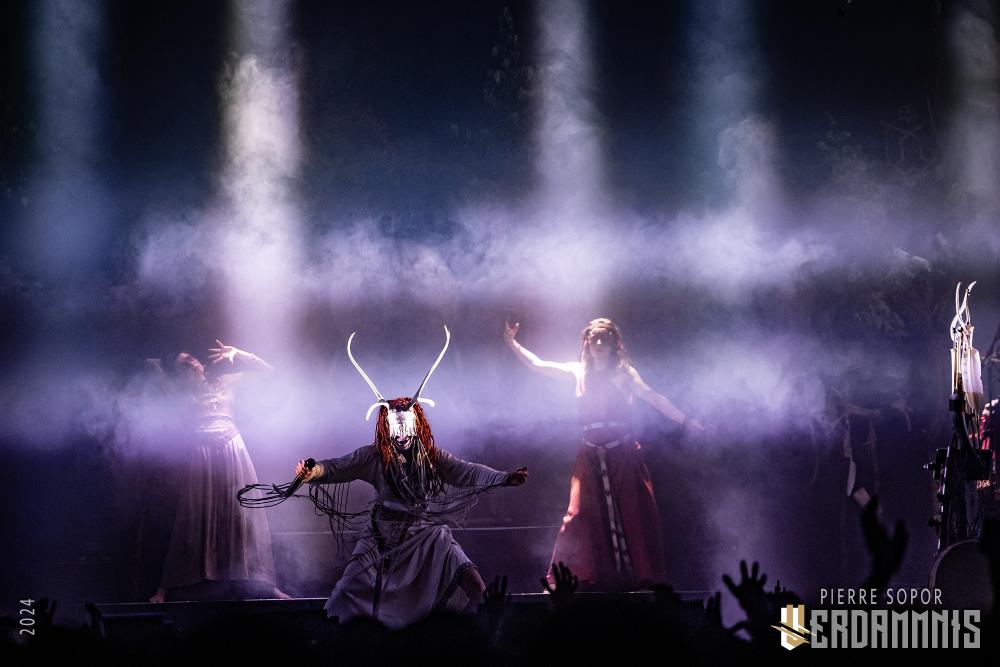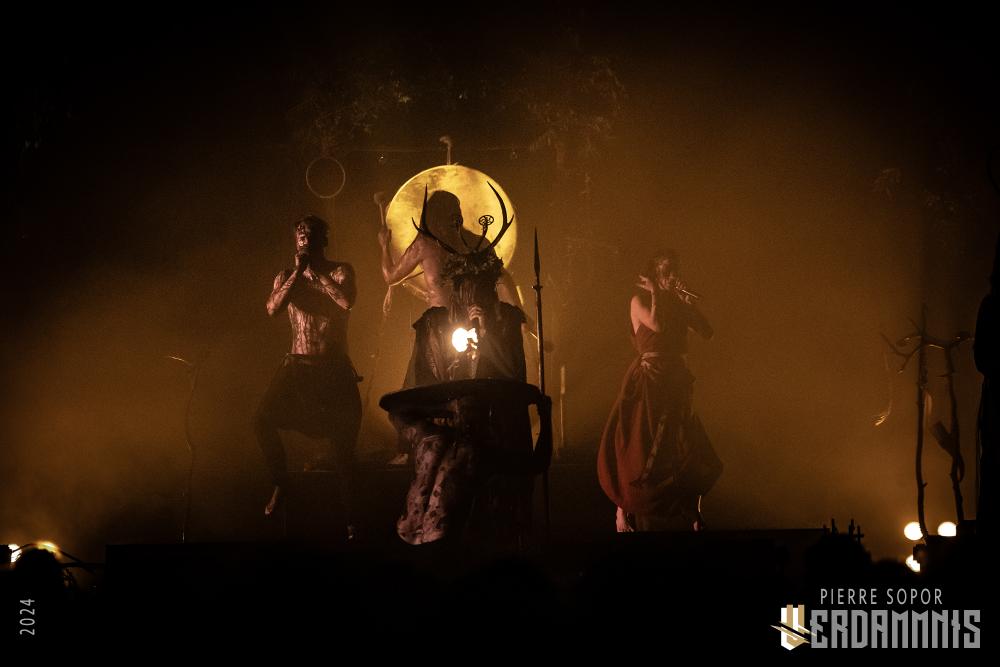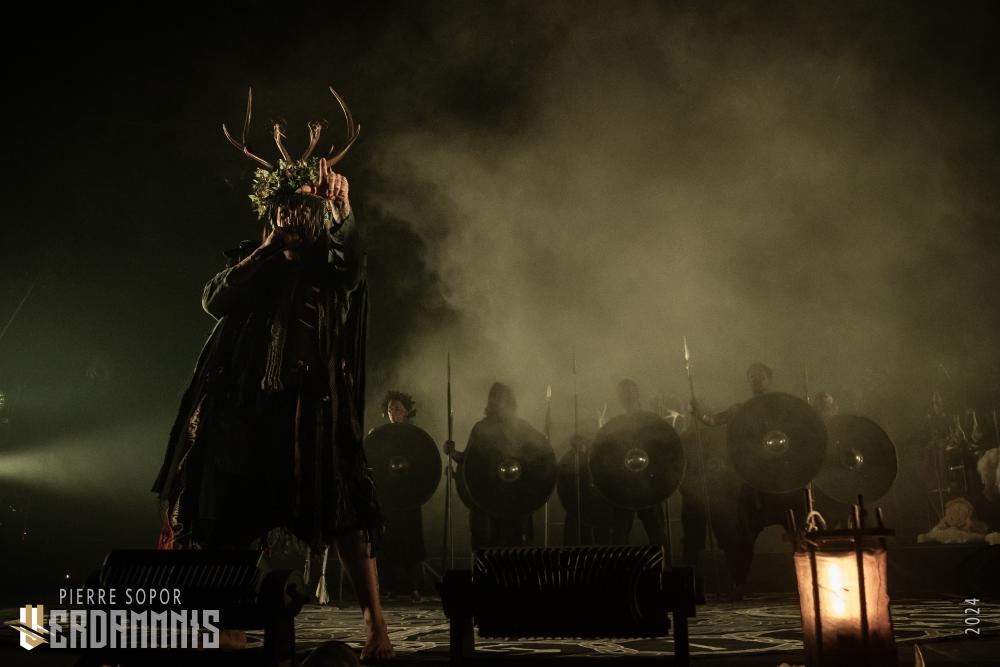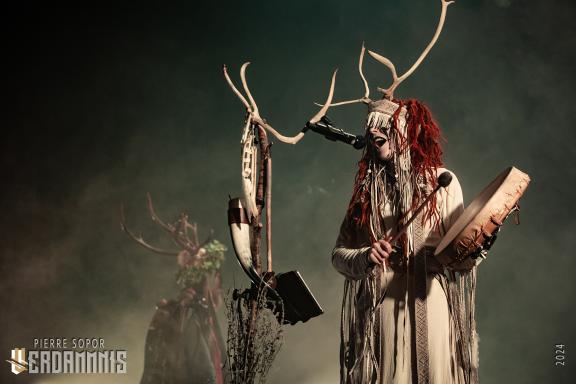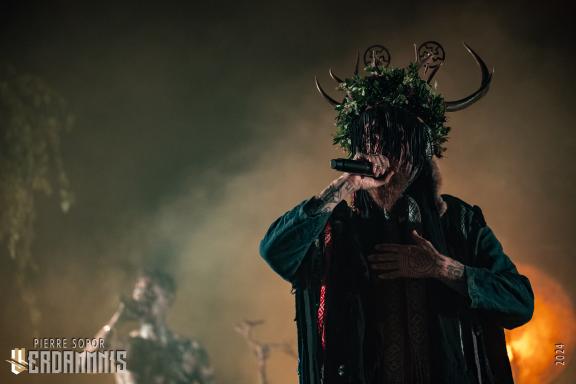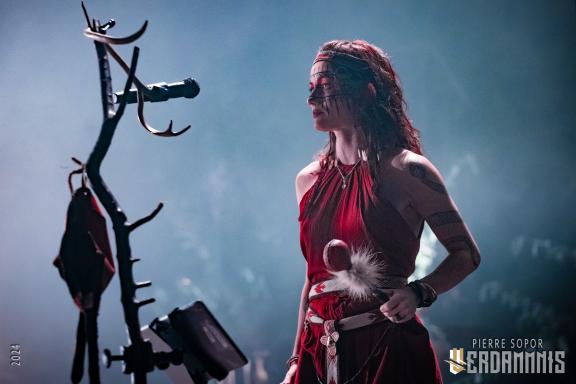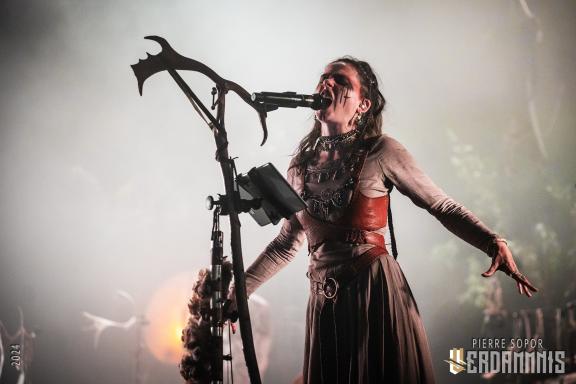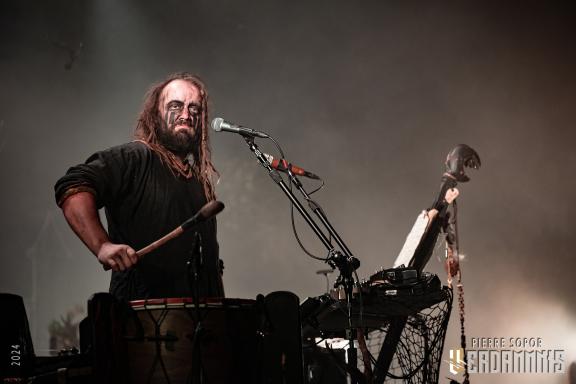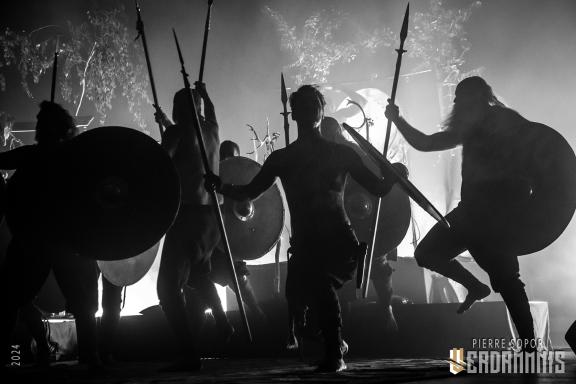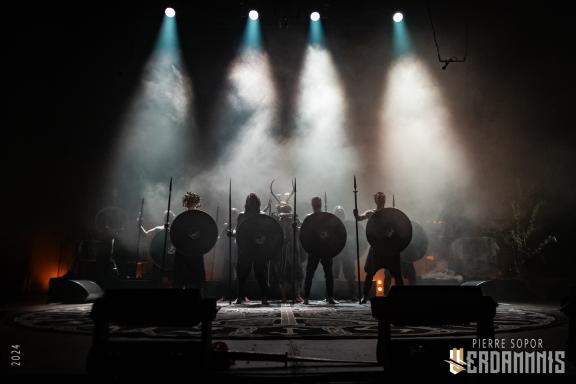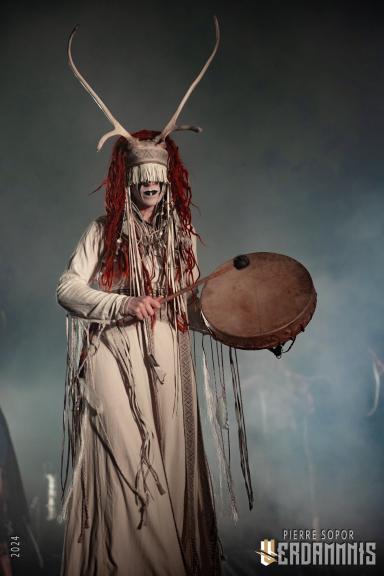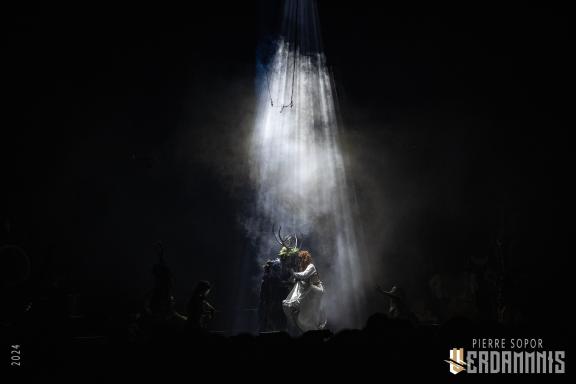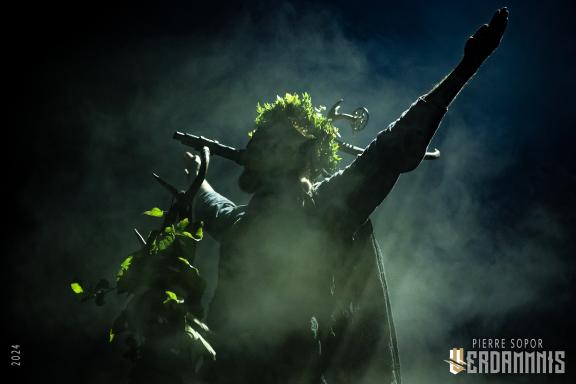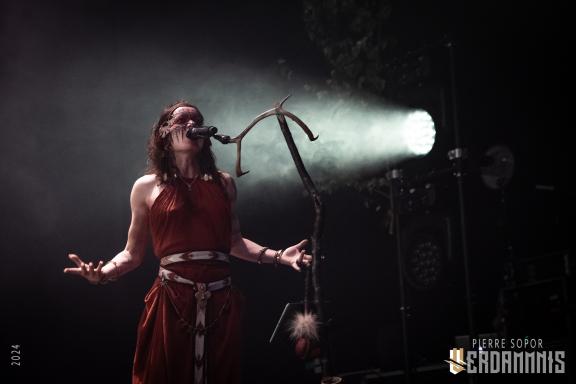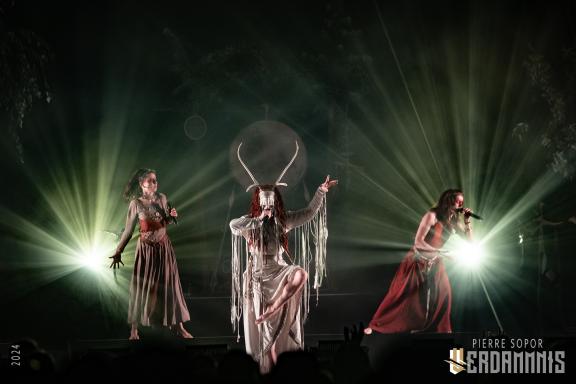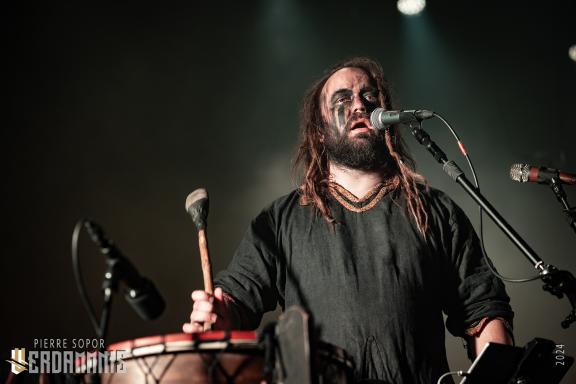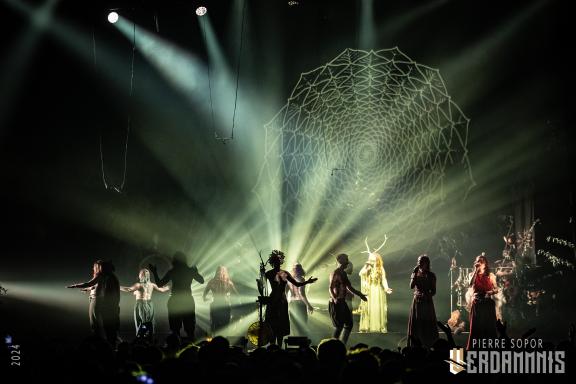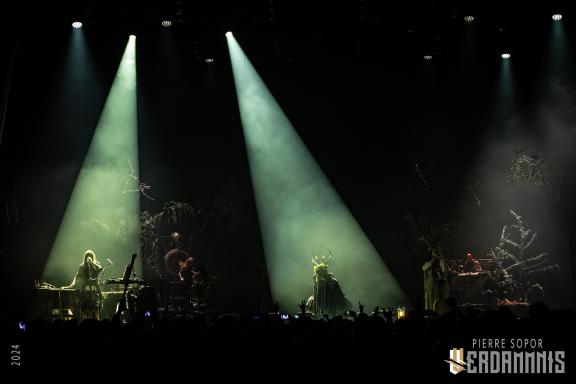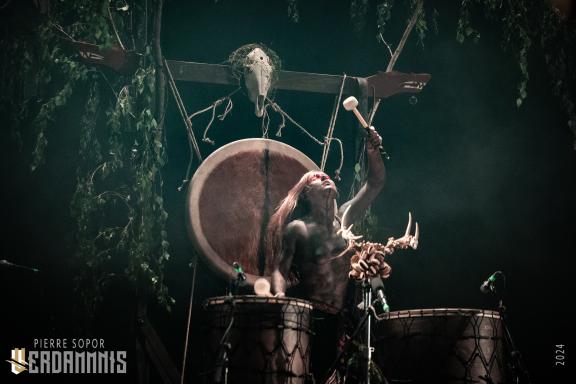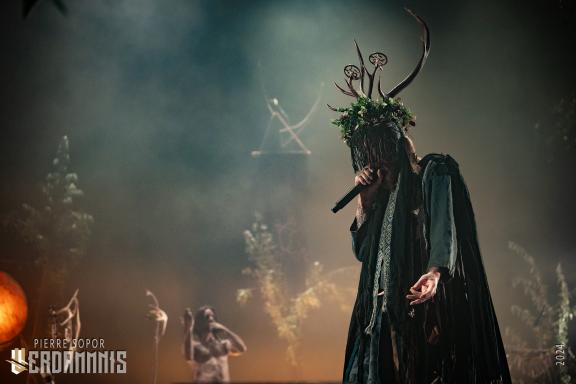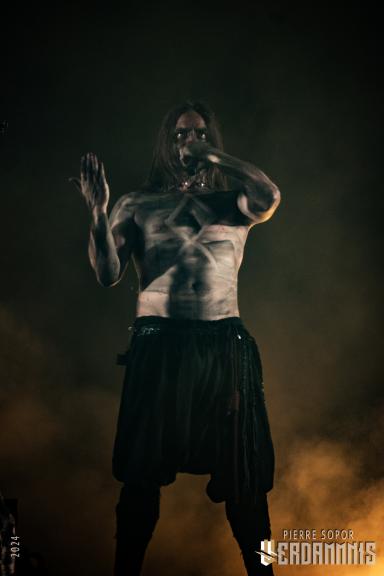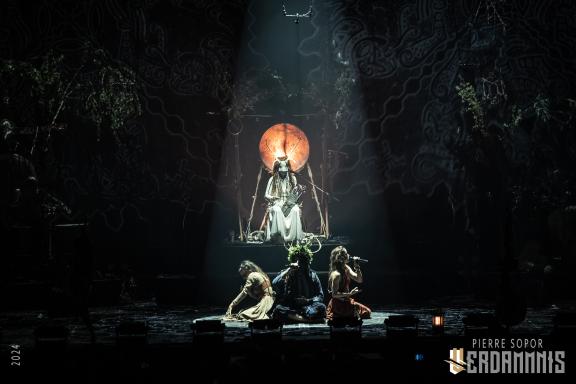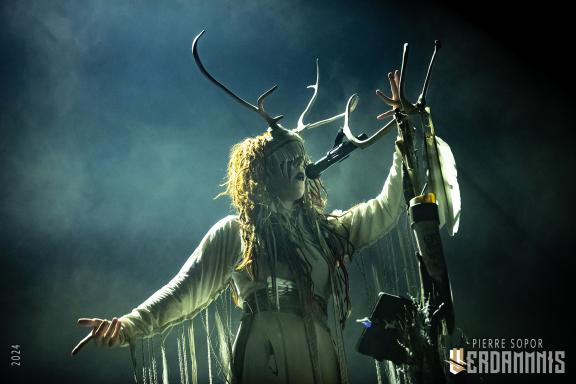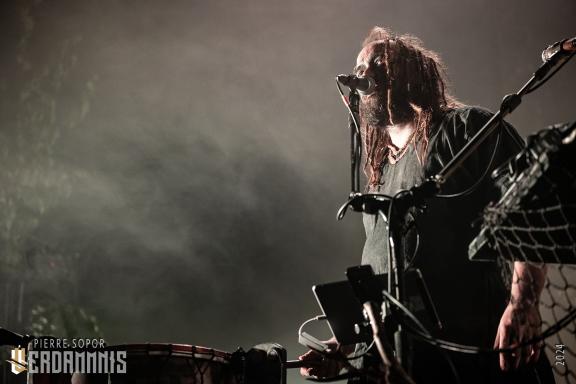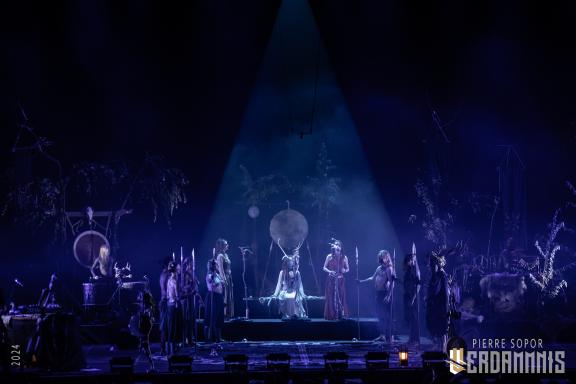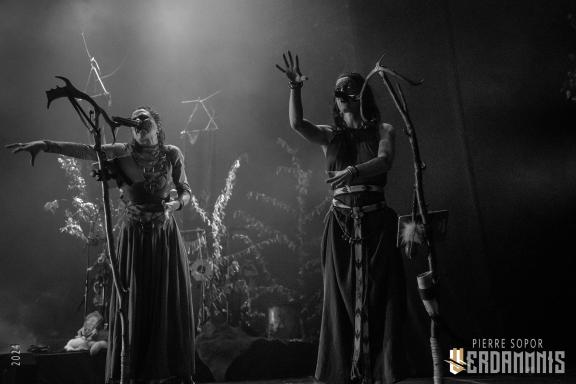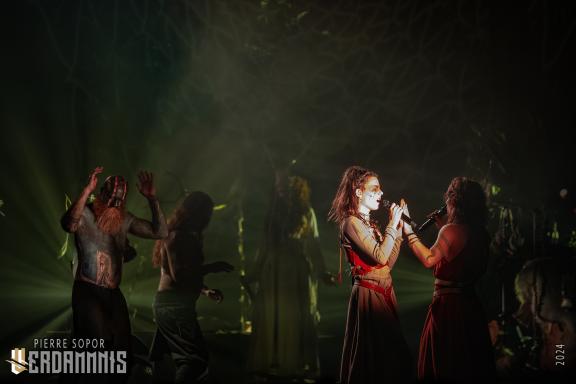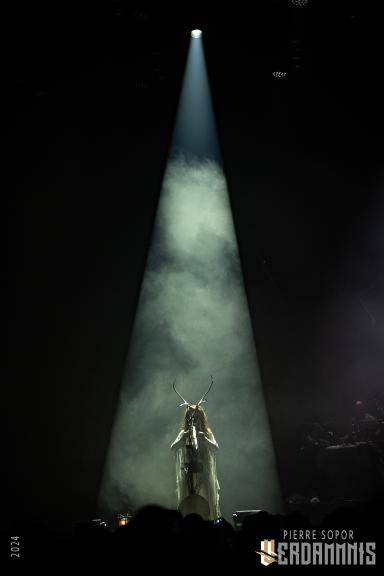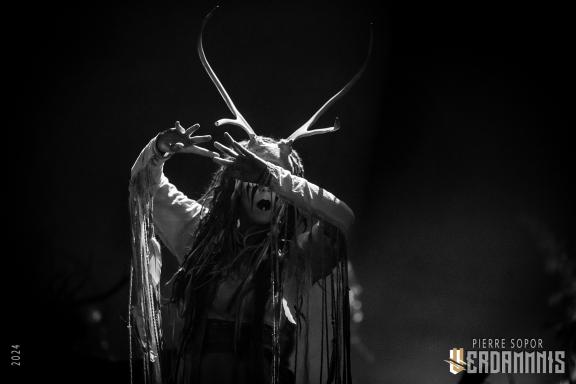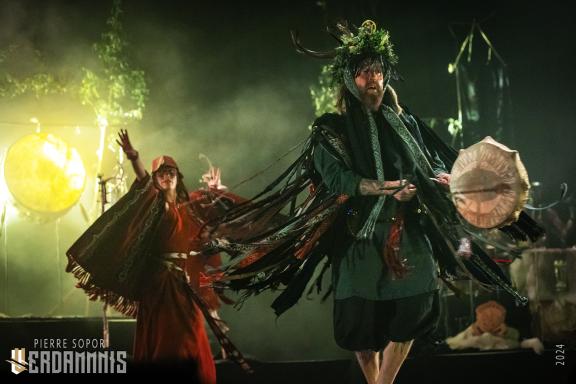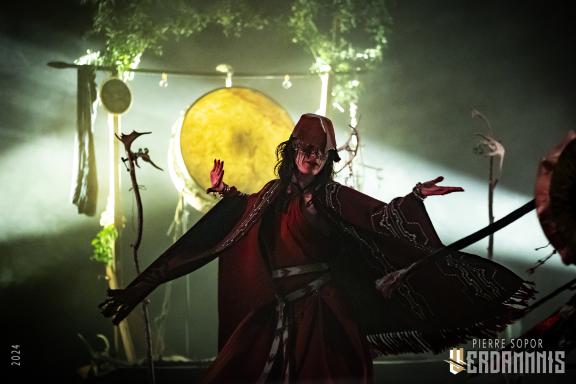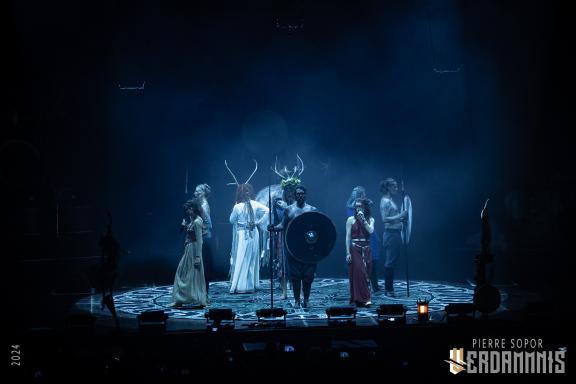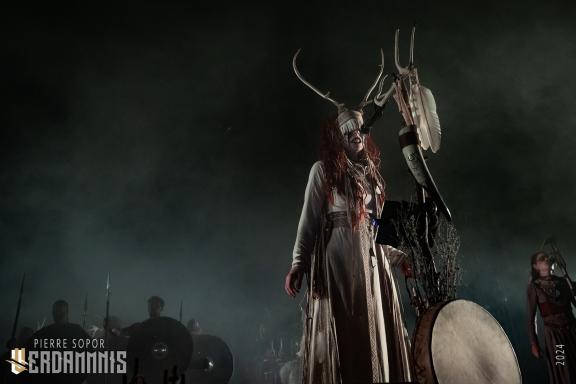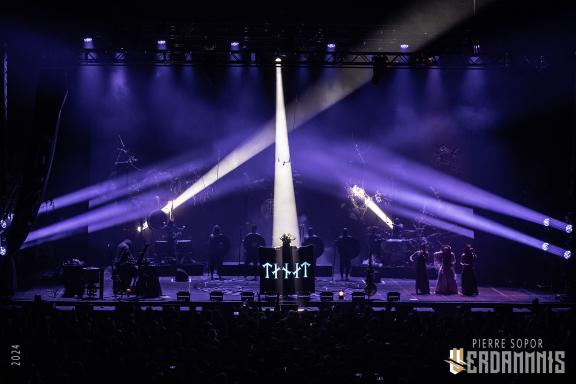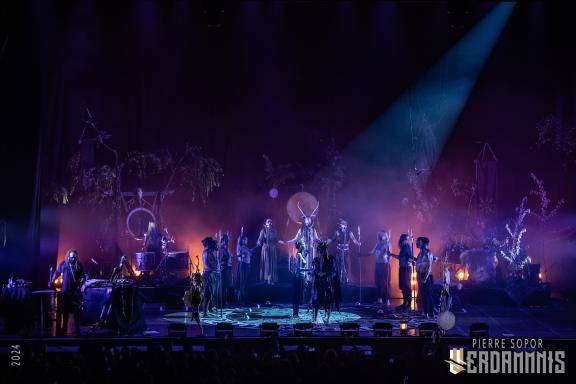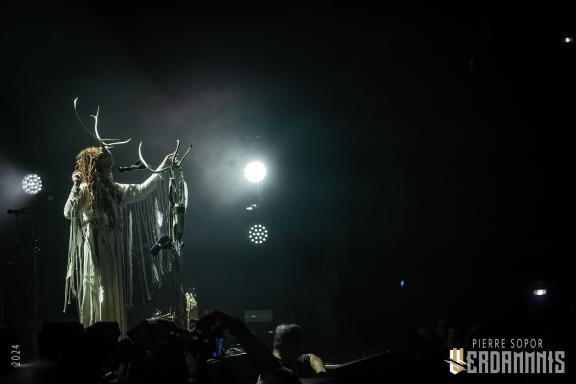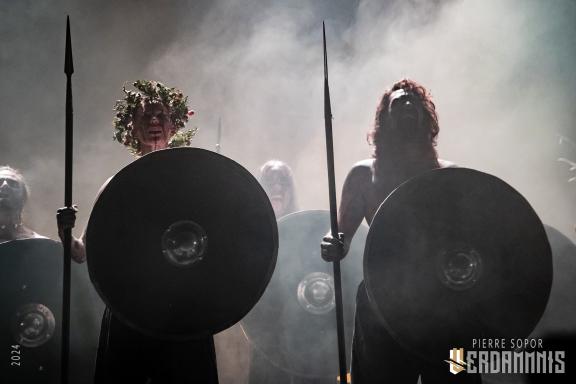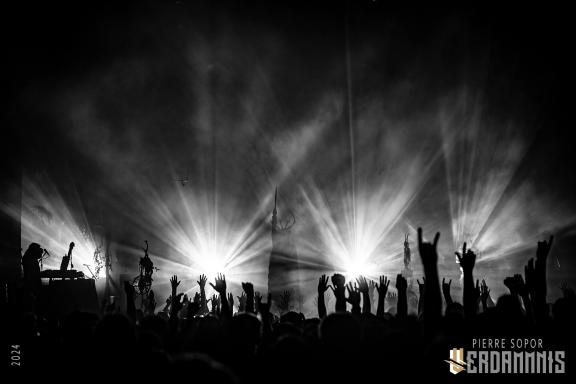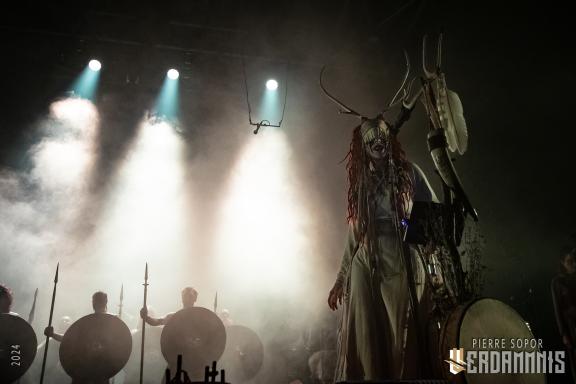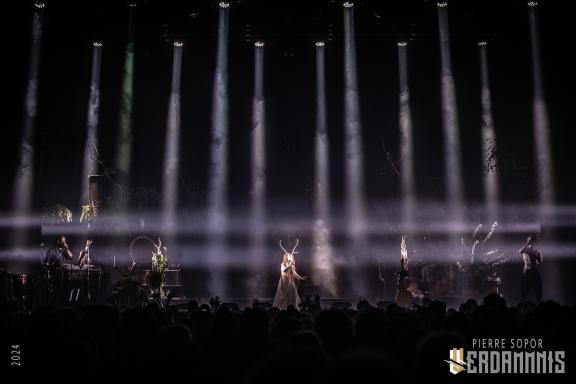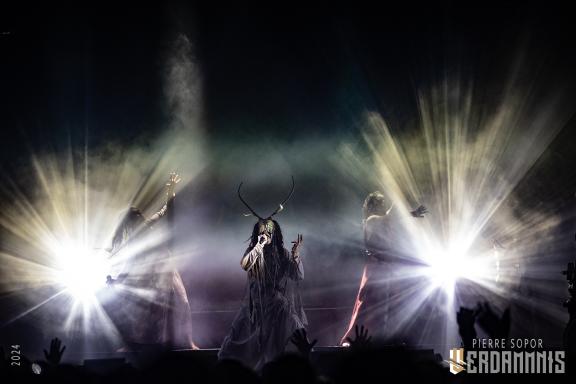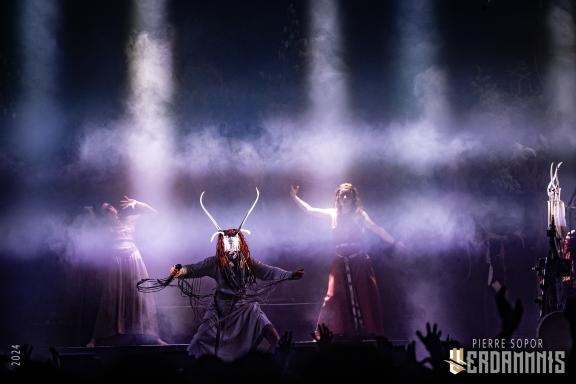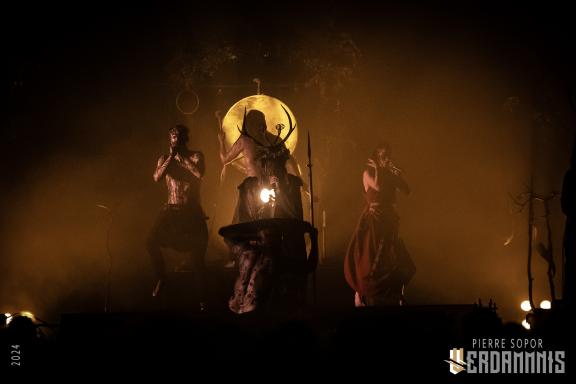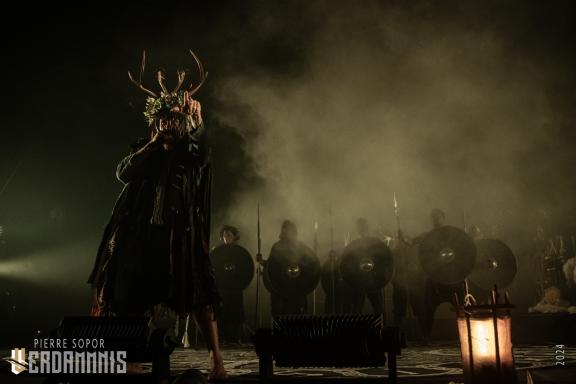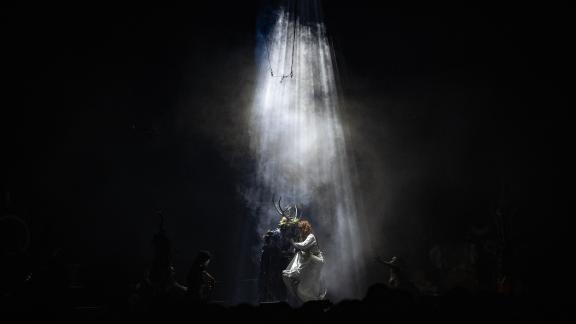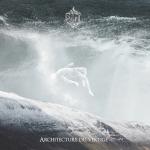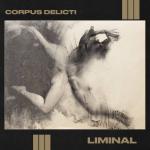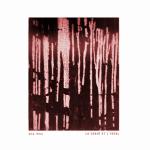Heilung is ten years old. The Nordic folk collective has enjoyed a meteoric rise thanks to its live performances, which immediately rule out small venues. Heilung grew up in the great outdoors, and found themselves on stage at Le Zénith in Paris for an evening organised by Veryshow. The opening act was another little phenomenon: the avant-garde metal band Zeal & Ardor, who have just released the album GREIF (review) and whose popularity continues to climb. Not a bad programme, eh?
ZEAL & ARDOR
The contrast with the headliner is striking in a number of ways: before the atmospheric incantations of Heilung, there were the big, angry riffs of Zeal & Ardor and their playful yet fascinating blend of blues/gospel, extreme metal and a whole host of other things (from pop to noisy dissonance, via stoner...). But Zeal & Ardor's stage show is also a radically different from what's to come: apart from the hoods that hide the musicians' hair in the opening moments of the show, there's no theatrics, no costumes, no make-up. It's sober, authentic, no frills, you come to play and the band doesn't need anything more to demolish everything. Five musicians lined up like stakes, and yet they send out a sound of rare power: with his warm, charismatic voice, Manuel Gagneux brings people together and his music, accessible and hard-hitting, has everything it takes to win the crowd over to his cause.
"Good evening Paris. We're Zeal & Ardor. Discussion is not good... so, music!" chattered the facetious Swiss-American singer in french, before adding later, “We've got two more tracks so we're going to do this without comment”: Manu didn't come to talk, Manu came to smash us. No frills, we told you. Just smackdowns and some more smackdowns. The exalted choirs of Blood in the River or the sinister atmosphere of Ship on Fire from the days when blues and gospel were still dominant, the violence of Götterdämmerung, the progressive touches of Kilonova or the irresistible Death to the Holy: Zeal & Ardor grab us by the guts, pull us into its whirlwinds of madness, shaking us in all directions with its acrobatic variations of rhythm. We're left gasping for air just long enough to hear Devil is Fine, a melancholic anthem of rebellion that's as beautiful as ever, before finishing with the furious I Caught Youand Clawing Out. Zeal & Ardor, without artifice, without more words than necessary, have no equal when it comes to putting a room through the wringer. The band's power is intimidating, but by opening up their music to so many horizons, they make you feel welcome: once again, it was as massive as it was enjoyable.
HEILUNG
Concerts are rituals. It's nothing new: there's a whole lot of code that has to be respected to a greater or lesser extent. You dress for the occasion. Some drink beverages to be more receptive. You meet up with the masters of the cult for a performance... But Heilung takes things a step further. The show systematically begins in semi-darkness and silence, a collective moment of contemplation where, amidst the cold lights of a few smartphones and people howling like wolves, you can hear the instructions: ‘shhhhhuuut, it's the ritual!’ or ‘no photos during the ceremony! We're not messing around with the sacred: no jokes are allowed during the first few moments of Heilung's concerts, the only permitted fantasy is to shout ‘ah-ooooooooh’ in the dark. We are among serious people.
The synth layers set the mood, while the percussionists relentlessly hammer out martial and hypnotic rhythms from In Maidjan onwards. We're also impressed by the drummers, discreet and in the corners. They are the beating heart of Heilung, its backbone, and they infuse the show with energy for over two hours without ever faltering. The grand spectacle assumes its share of fantasy, and so much the better: their ‘amplified history’ is not intended to be a strict and severe reconstruction (the synthesizers that the Vikings had in the 9th century were not as sophisticated). As a result, the collective have free rein to bring their aesthetic visions to life, but also to tell their stories, each track being the occasion for a magnificent tableau and a narrative mise-en-scene that often installs a real poetry and even a form of romanticism.
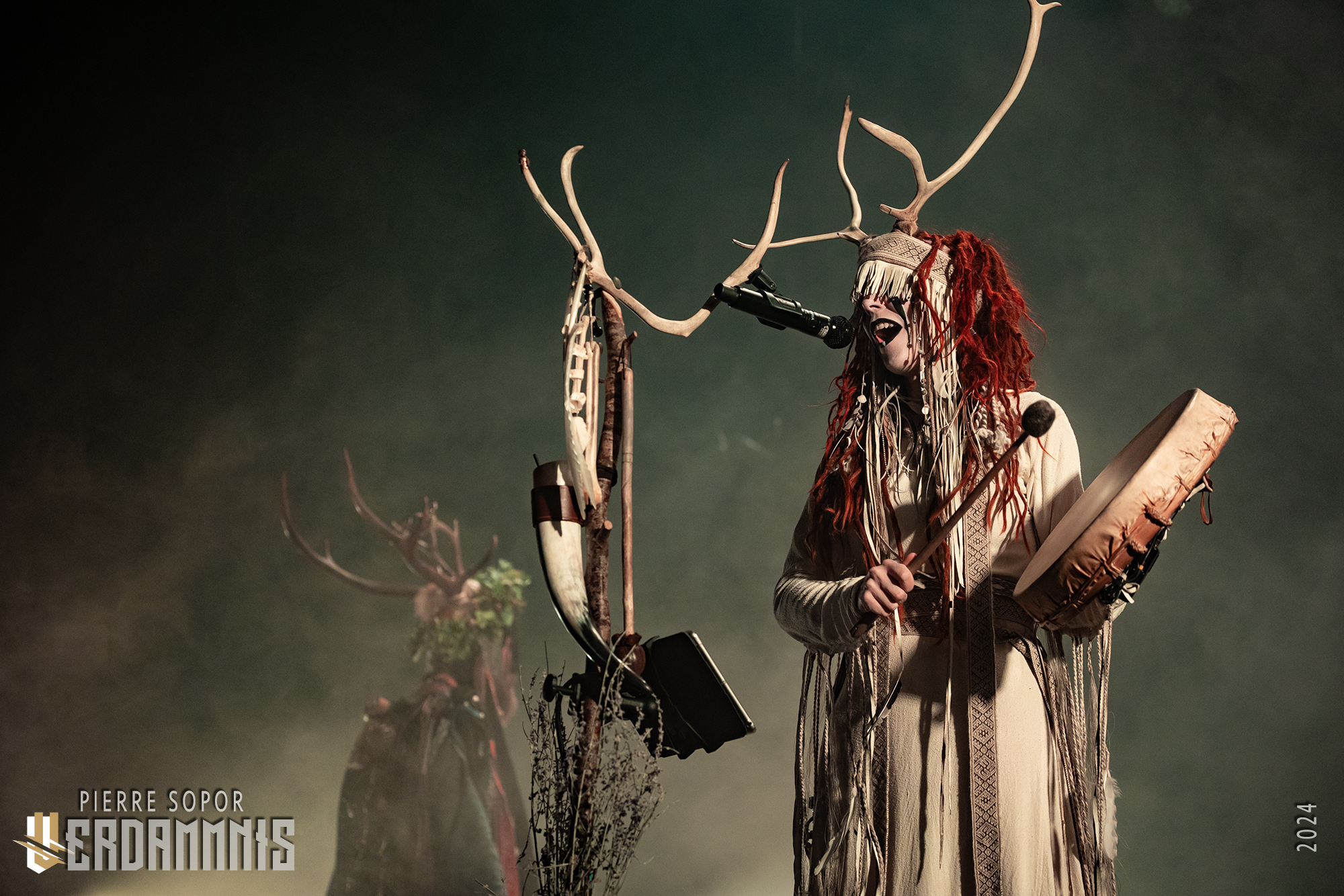
A ritual is codified and Heilung concerts are no exception to the rule: everything is calculated, measured, as if on rails. The faithful, already initiated, know this: the throat-singing mantras of Alfadhirhaiti sound the arrival of the extra warriors at the back of the stage, an intimidating and bellicose presence as the voices of Kai Uwe Faust and Maria Franz, masters of ceremonies hidden under their iconic masks, respond to each other. One is rough, threatening and chanting, while the other is gentle and contemplative. It's a feast for the eyes and ears, and the tableaux that follow are sublime and varied, with the artists on stage playing different characters in turn... But in this polished show that leaves no room for imperfections, Heilung may still leave some dubious: for such organic, atmospheric music, the performance often lacks spontaneity and the drinking horn falls between two stools. More of a grand spectacle than a concert where artists and audience actually meet (we're reminded of the Puy du Fou, or even the Disneyland parade - with all due respect to them - for this abundance of costumes and choreography), the show only leaves room for an unspoken exchange that not everyone will hear. We're amazed, of course, but not necessarily surprised. We admire but aren't necessarily part of the performance, and after two hours the process ends up being repeated (although it could be argued that trance is born of repetition).
However, against all the odds, the size of the Zénith didn't detract from the immersion, especially as there were still a few seats left and it was easy to breathe. On the contrary, by carefully pausing between tracks, leaving us with samples evocative of primitive, wild nights (this is the moment to unleash his most beautiful ‘ah-oooooo’), Heilung succeeds in bringing their universe to life. In the dark, with tracks like the fascinating palindrome Tenet and its immemorial darkness, or the timeless declamations of Krigsgaldr, you end up believing. It's a unique proposition and the music is truly rich, beyond the snarling drums that sometimes have the subtlety of a big blockbuster. Heilung seduce their hordes of fans, conquering them in advance, for the duration of a breathtaking show that sometimes manages to give the impression of a one-to-one moment shared by the fireside in the darkness of a dreamlike past. Above all, as long as you buy into the proposition, the show is truly generous, long, varied and ambitious - you can't accuse them of scaming you! So, is this a brilliant marketing ploy or a sincere cathartic ritual? Are these artists baring their souls on stage or putting their excellent know-how at the service of a well-rehearsed plan? At the end of the closing ceremony, as we return to the modern air of the Porte de Pantin and gradually come back to reality, we will conclude ‘and why not both?'.

